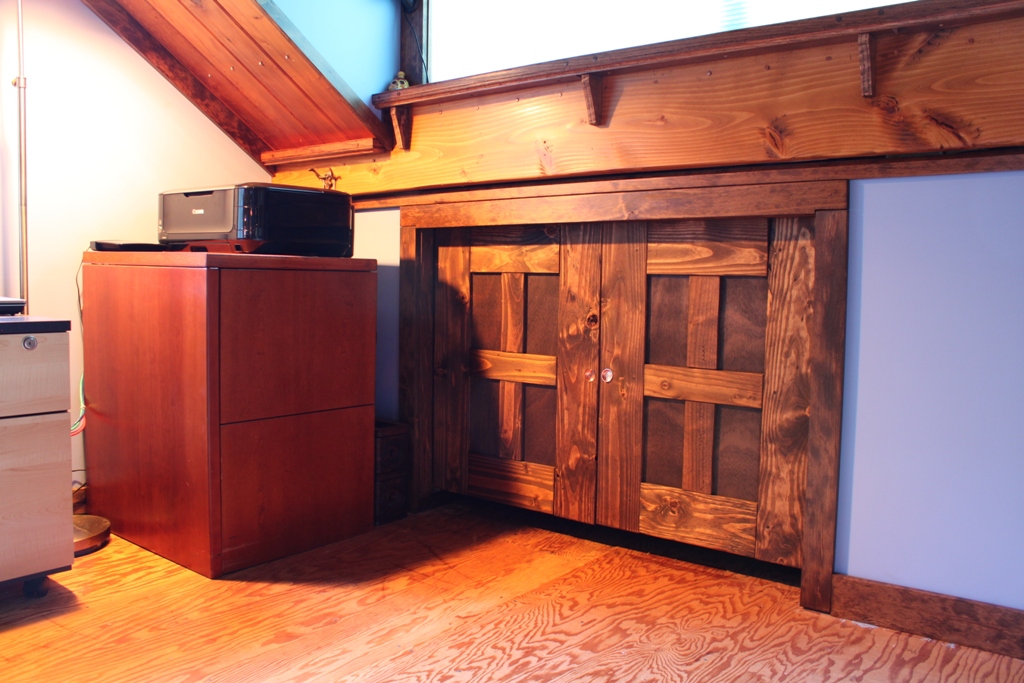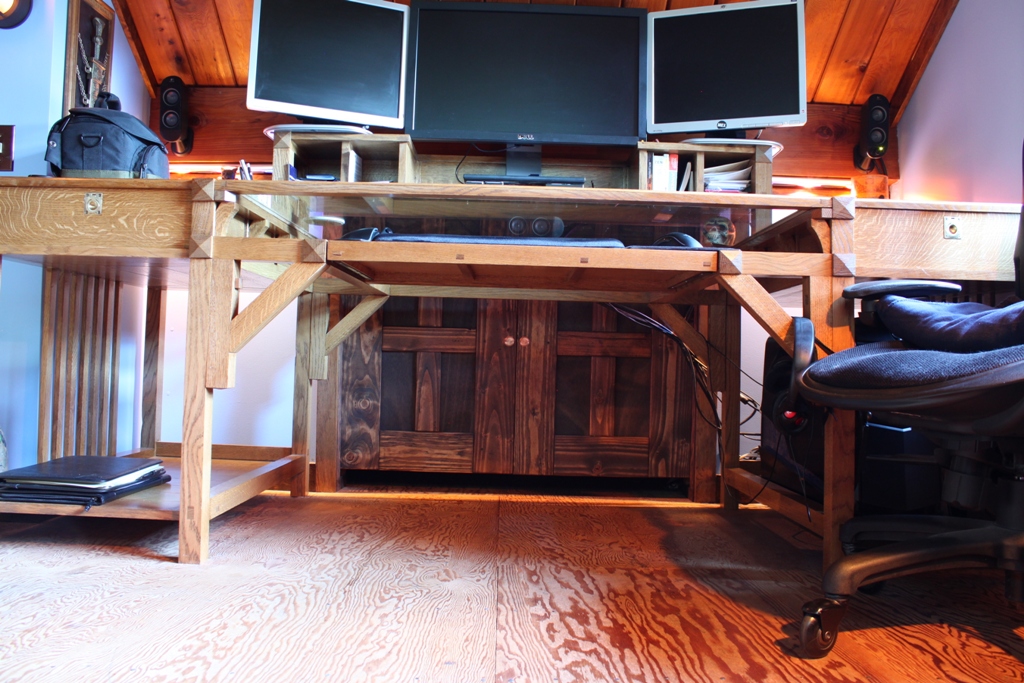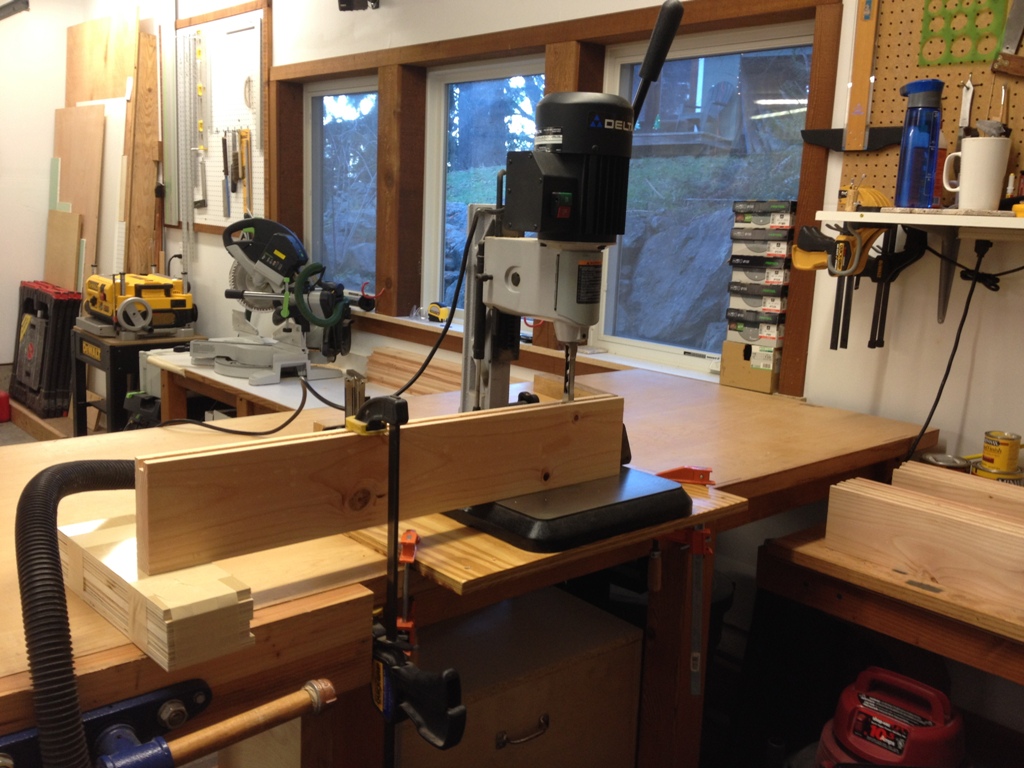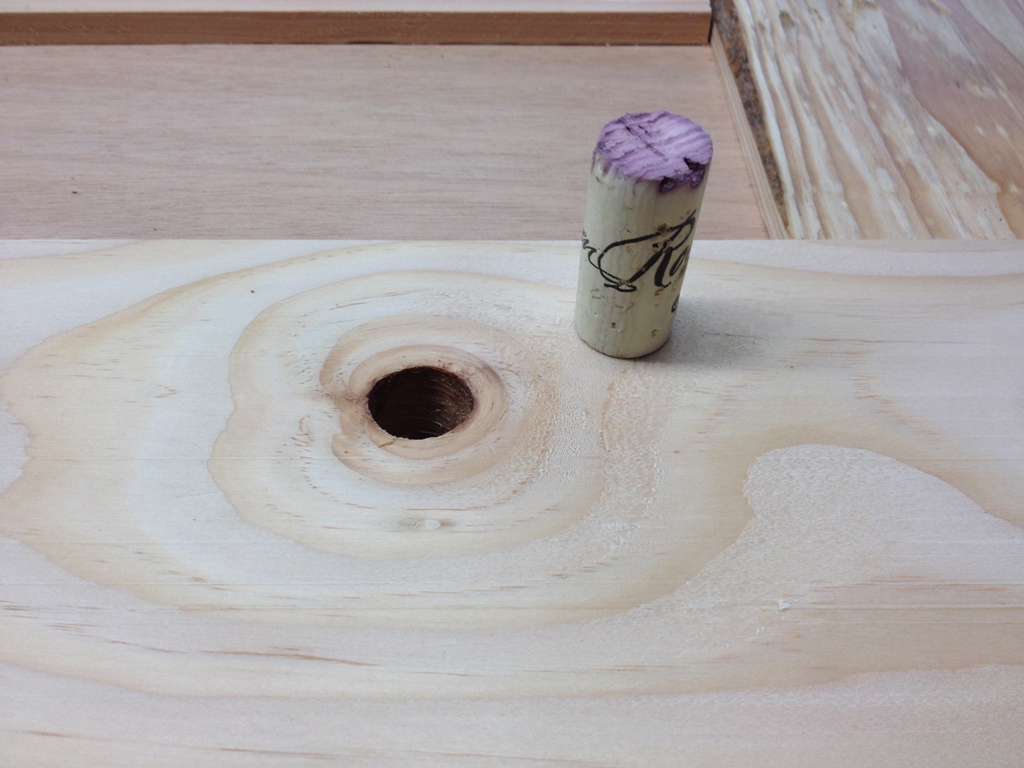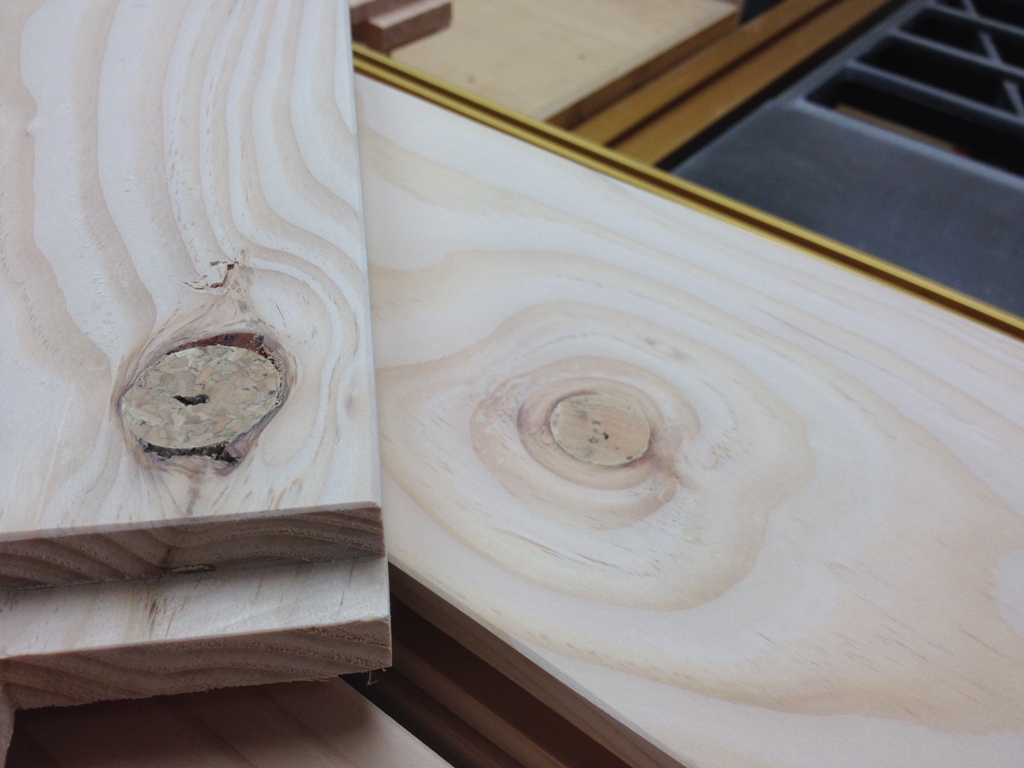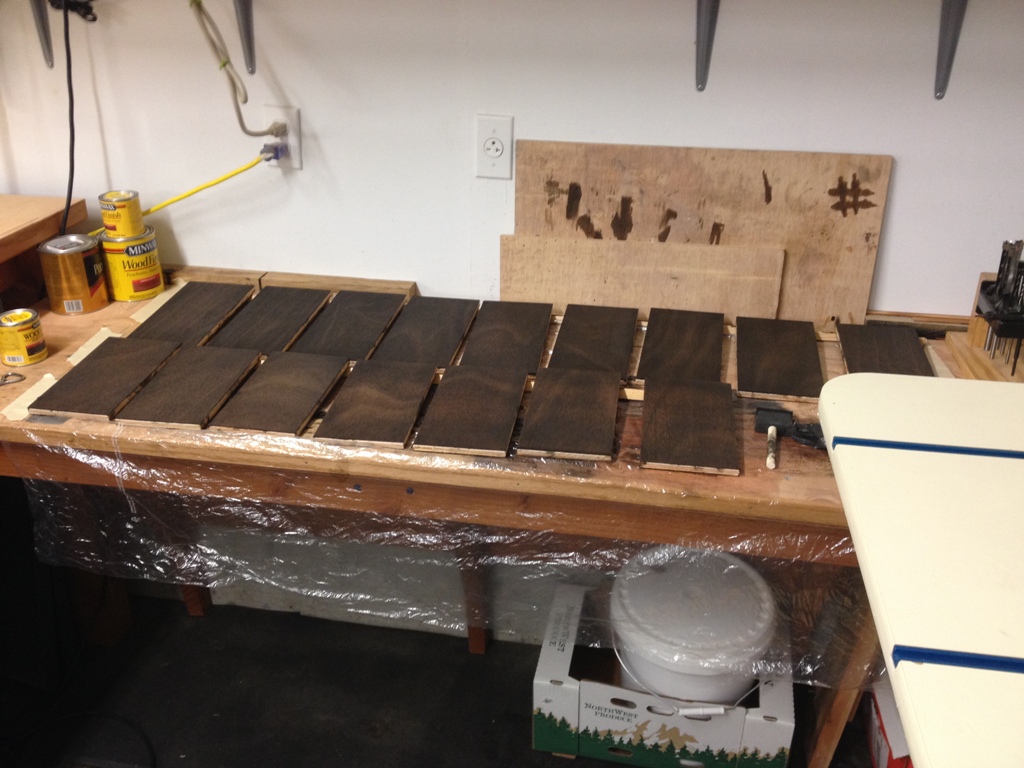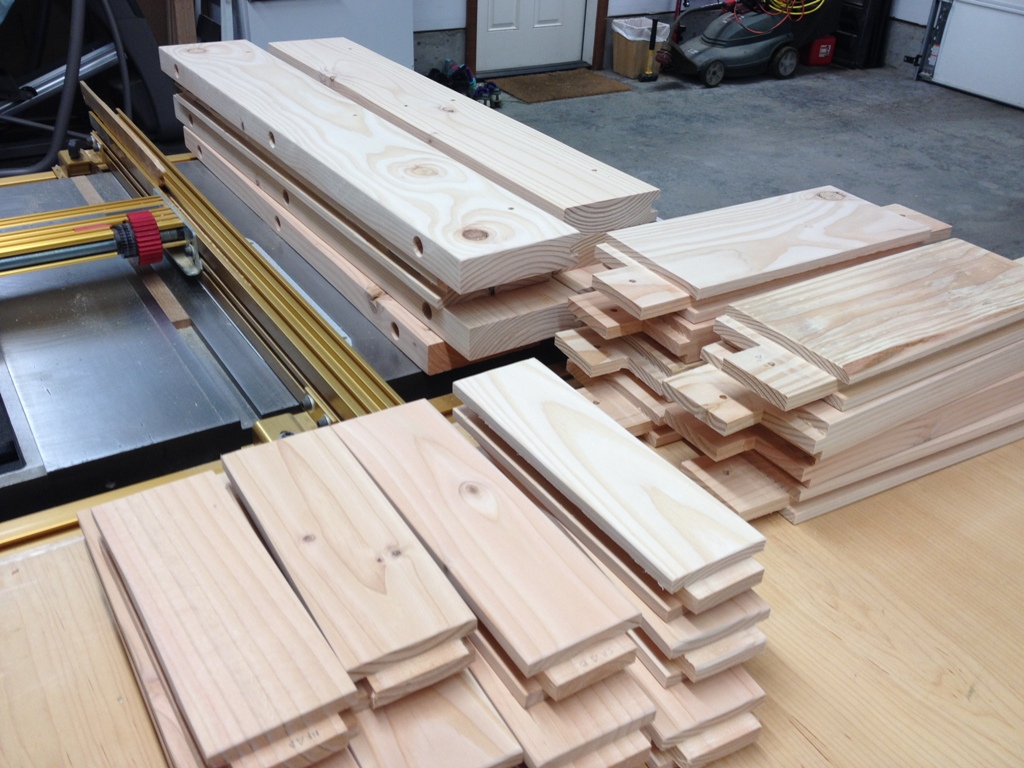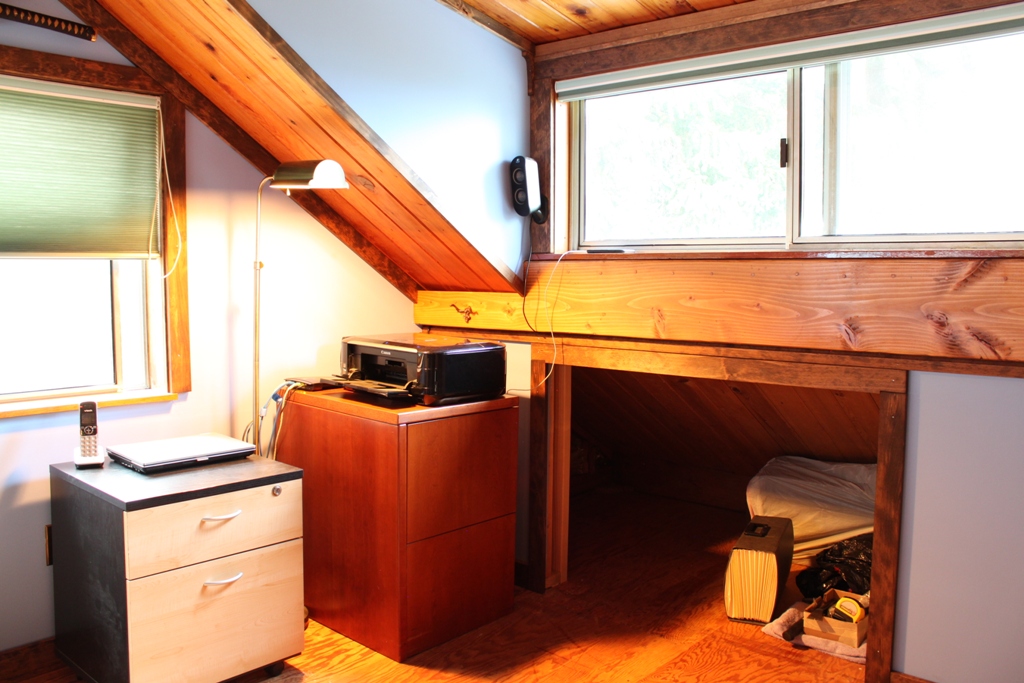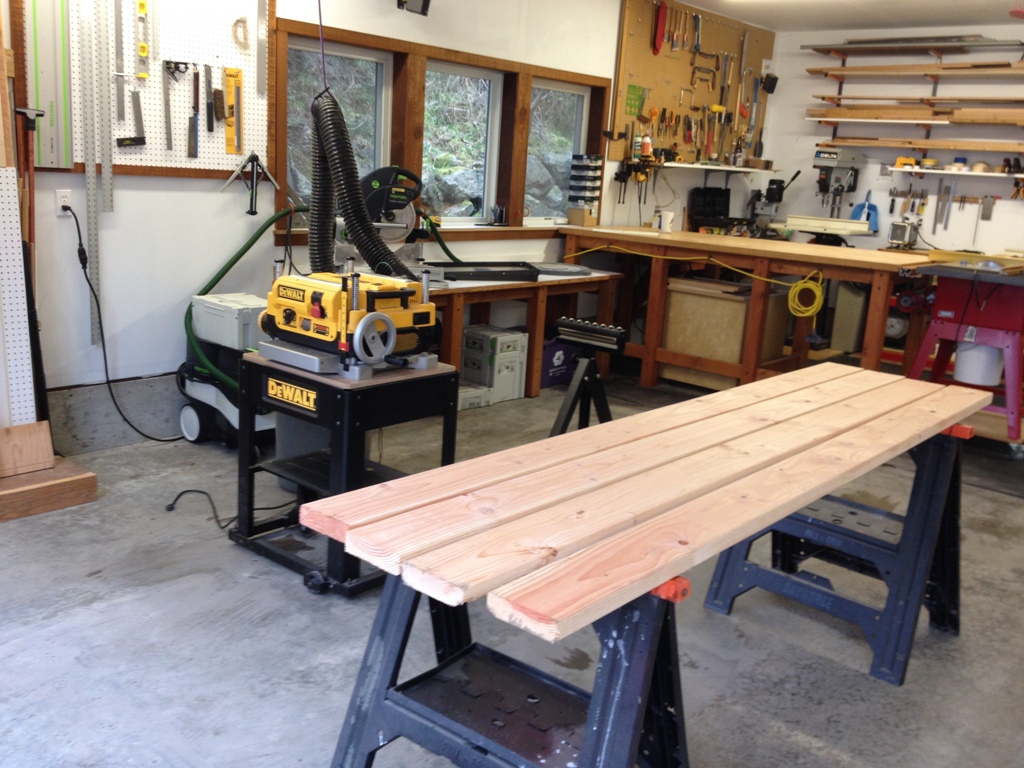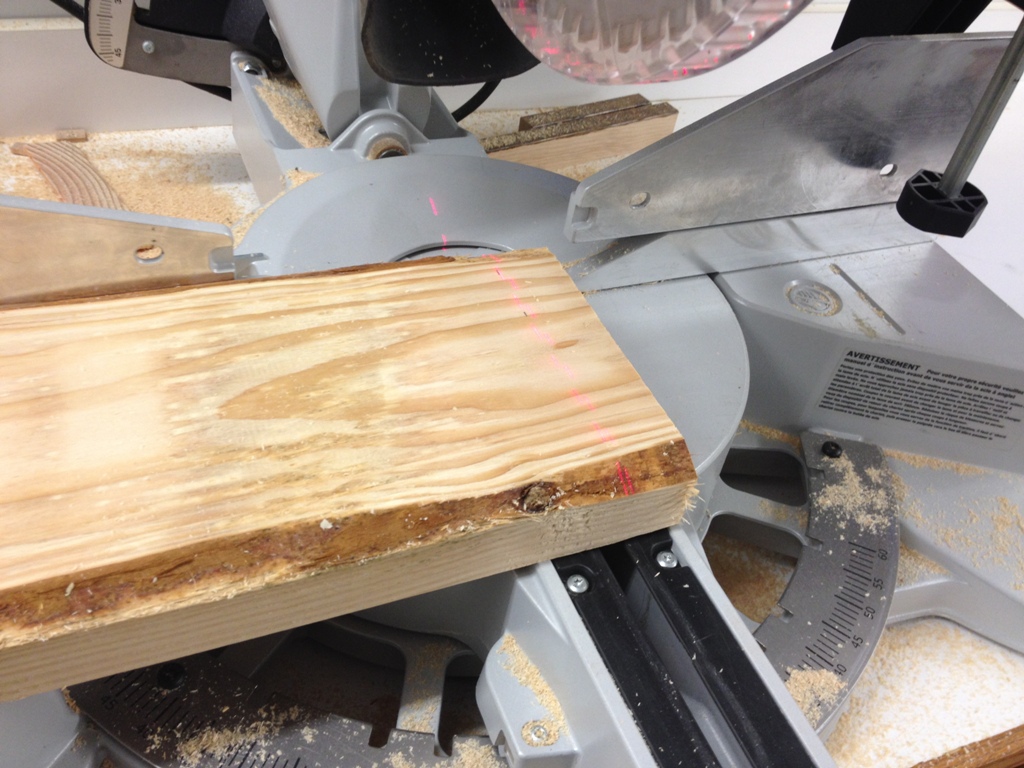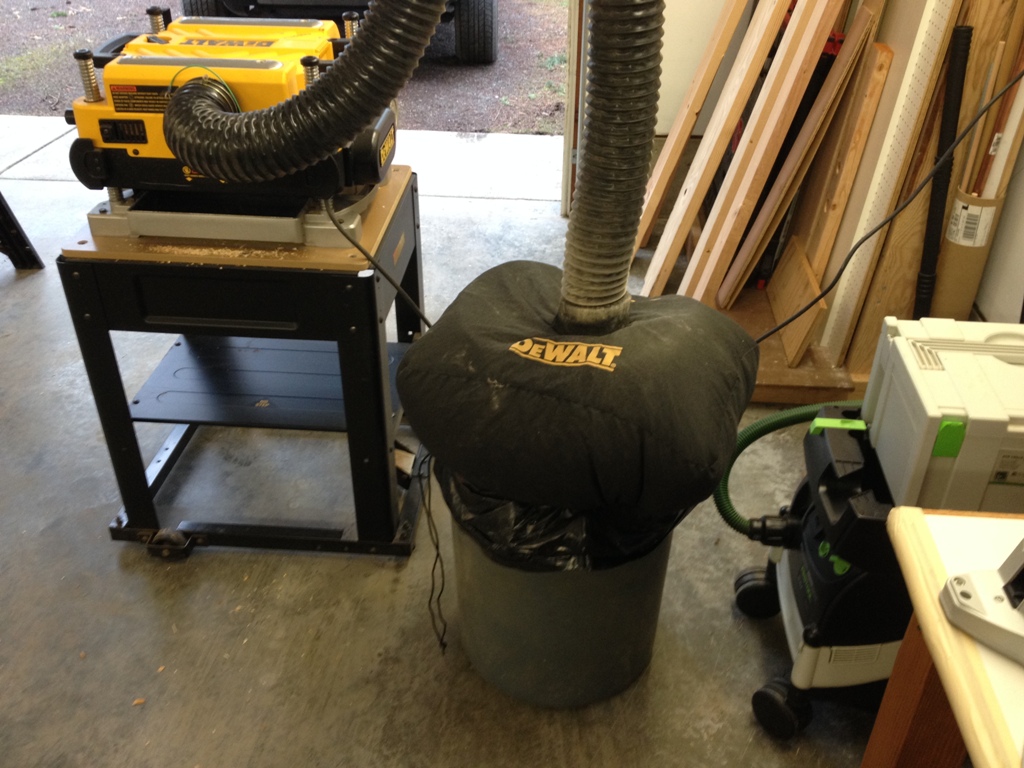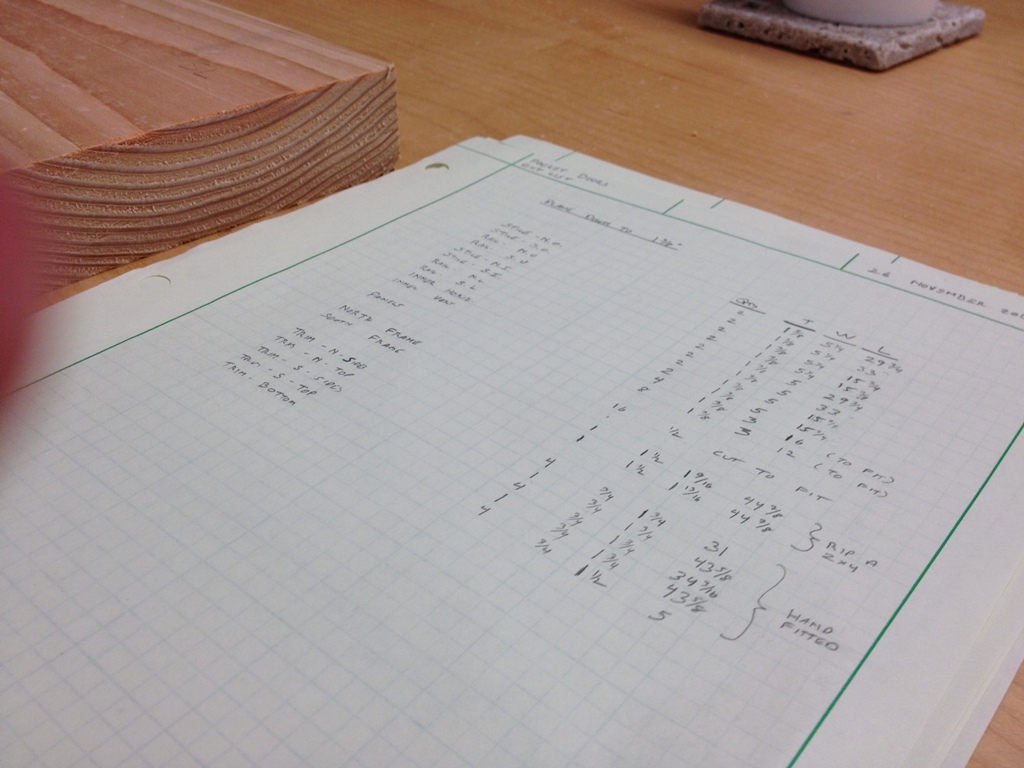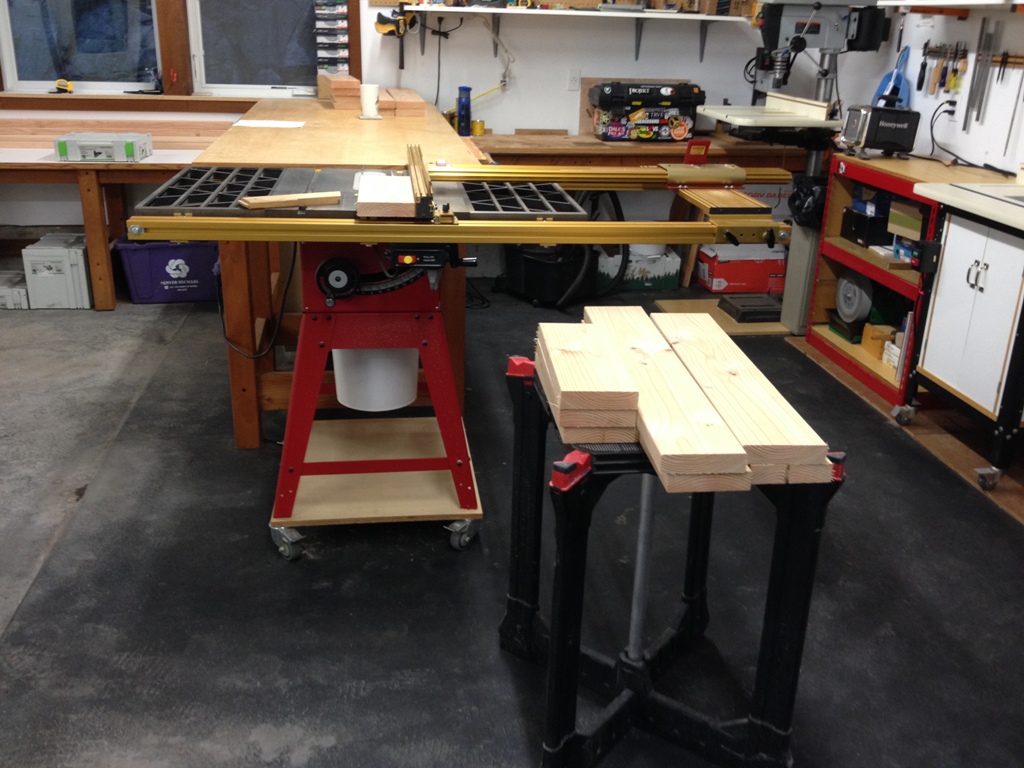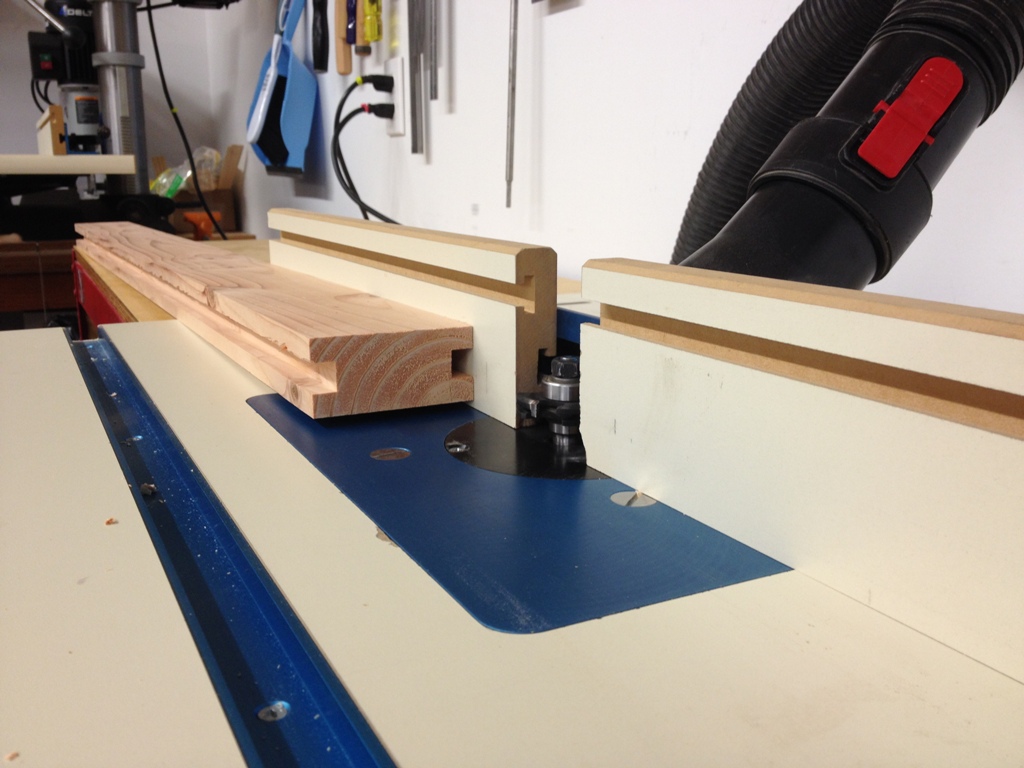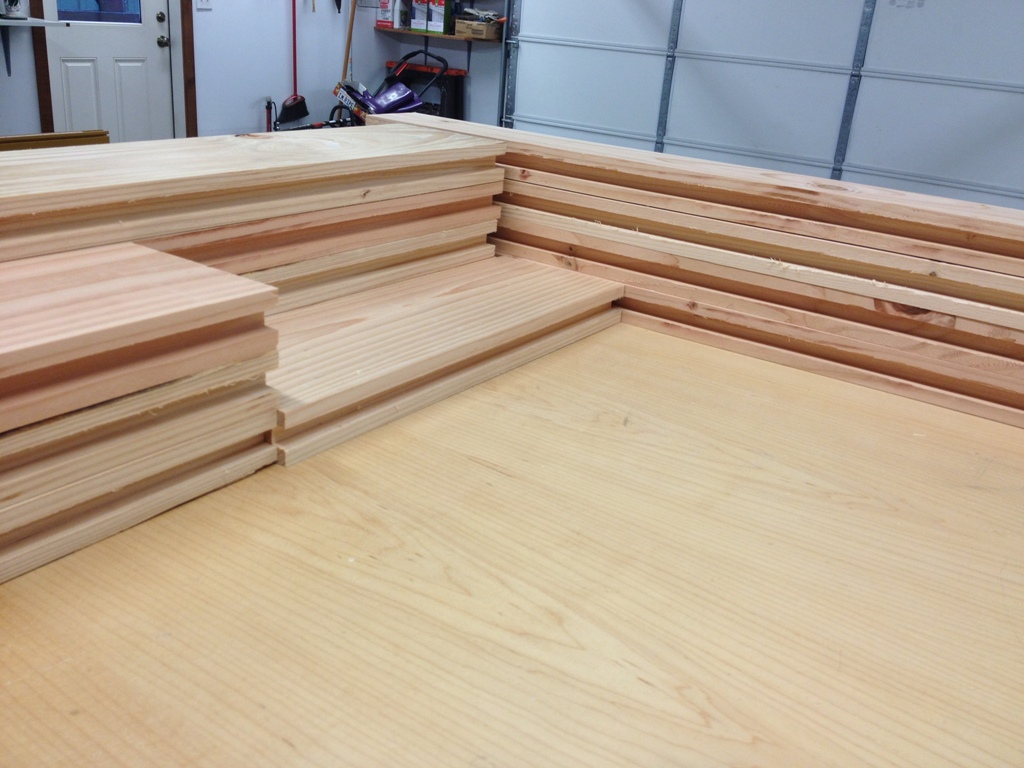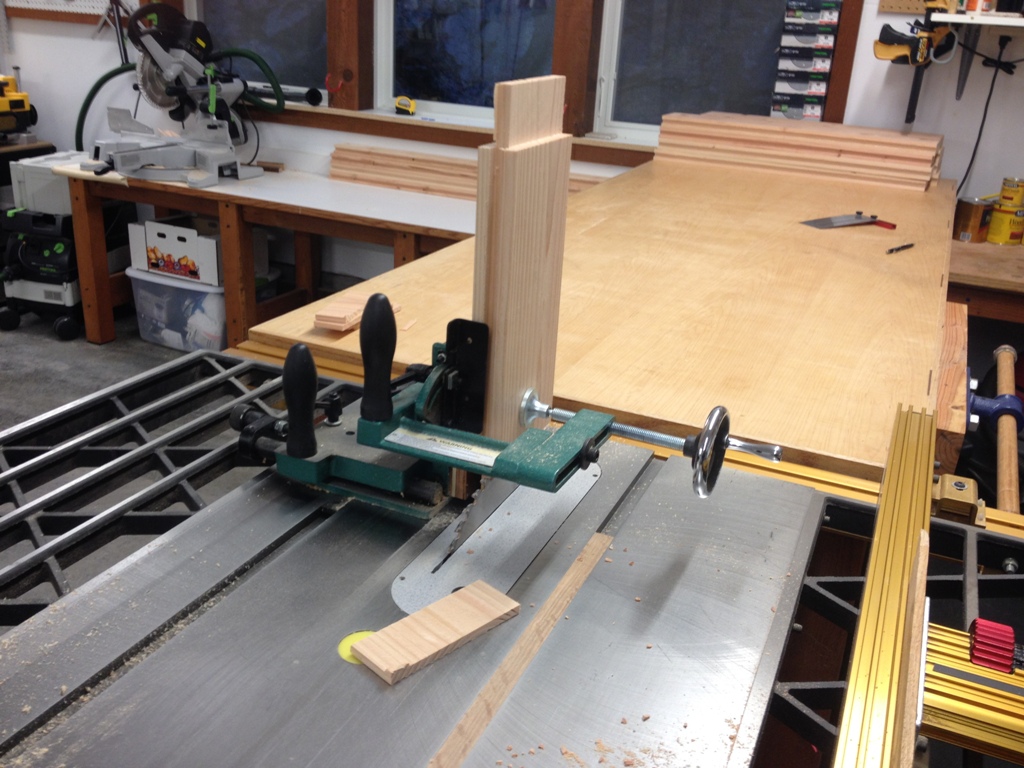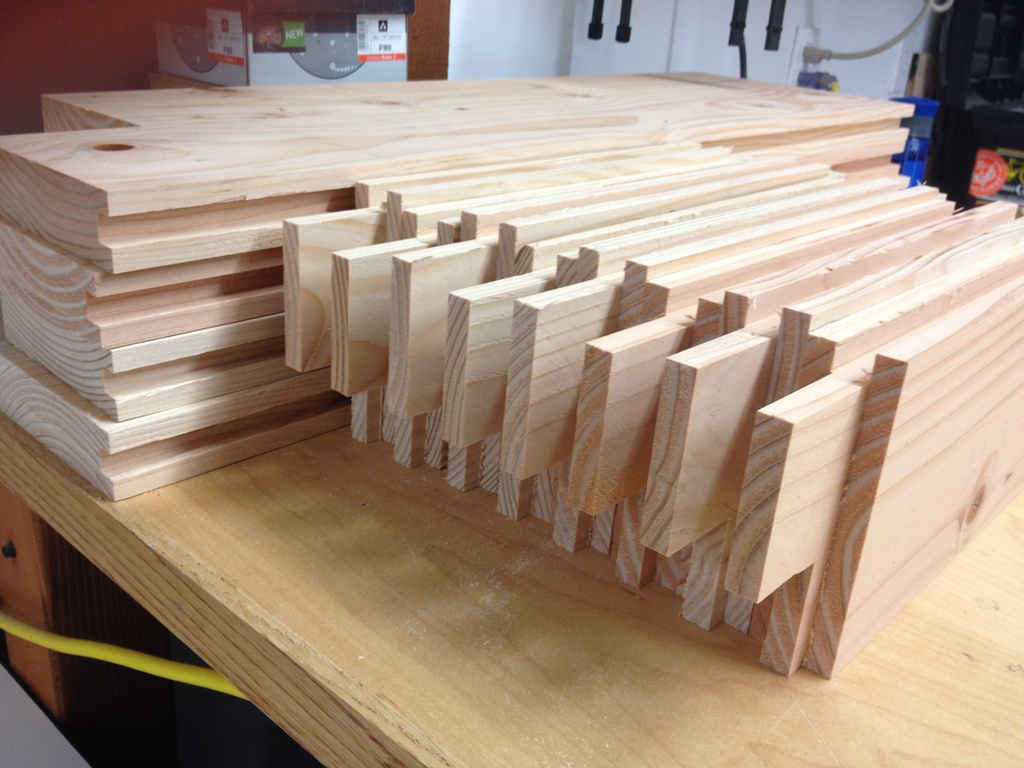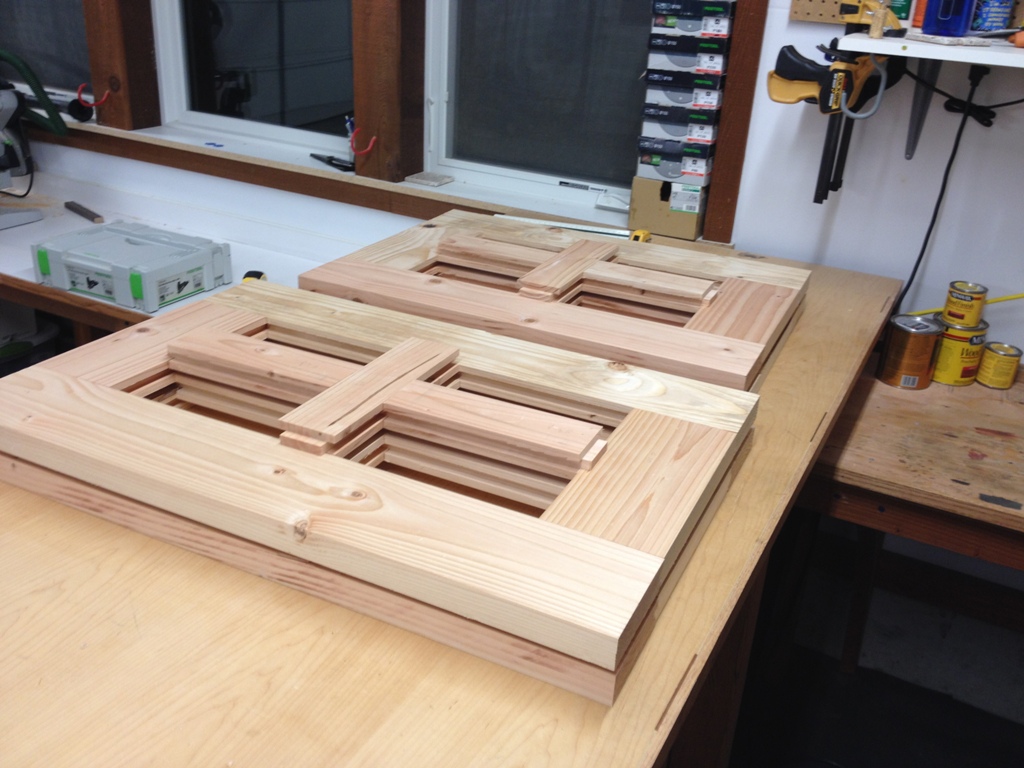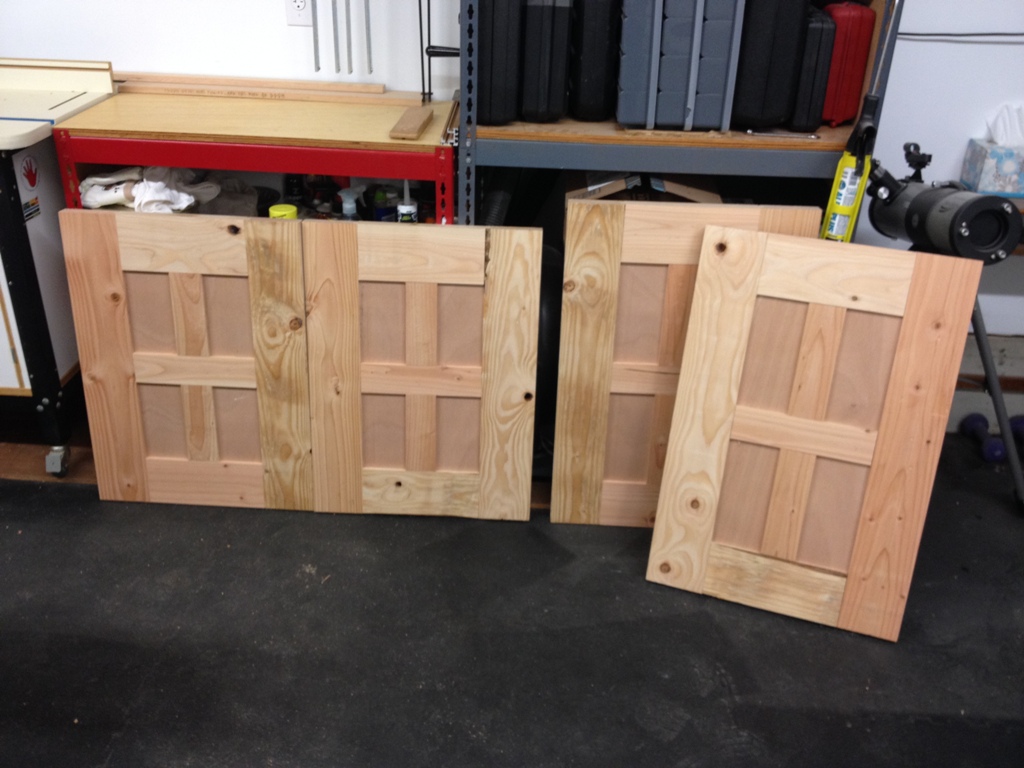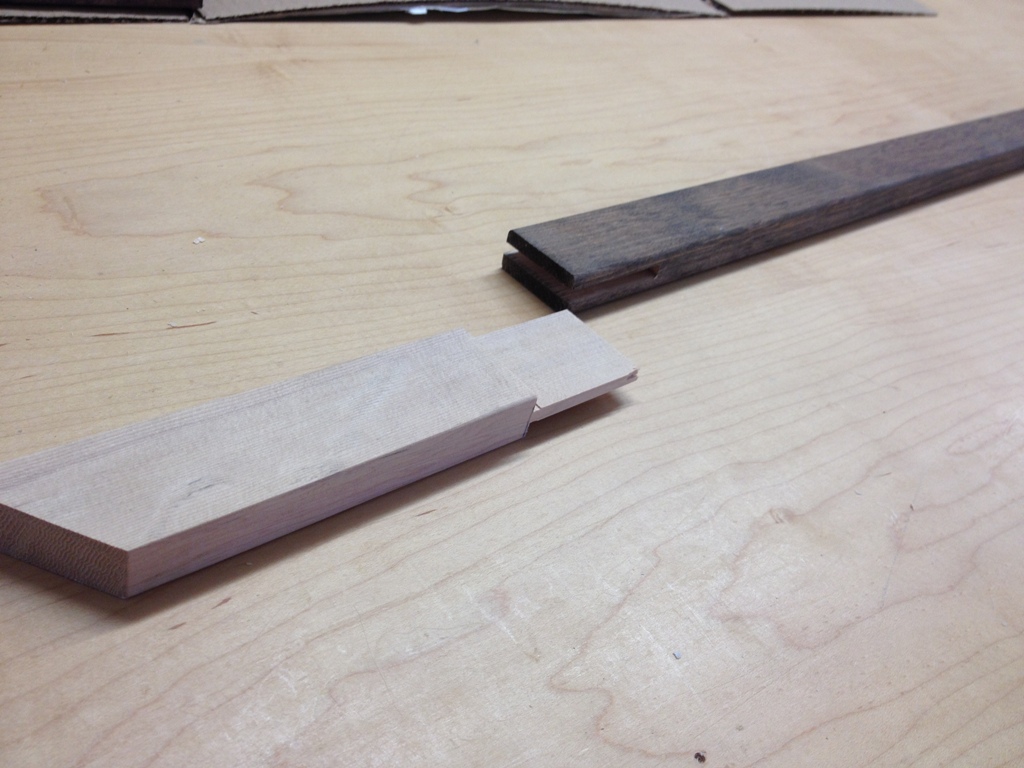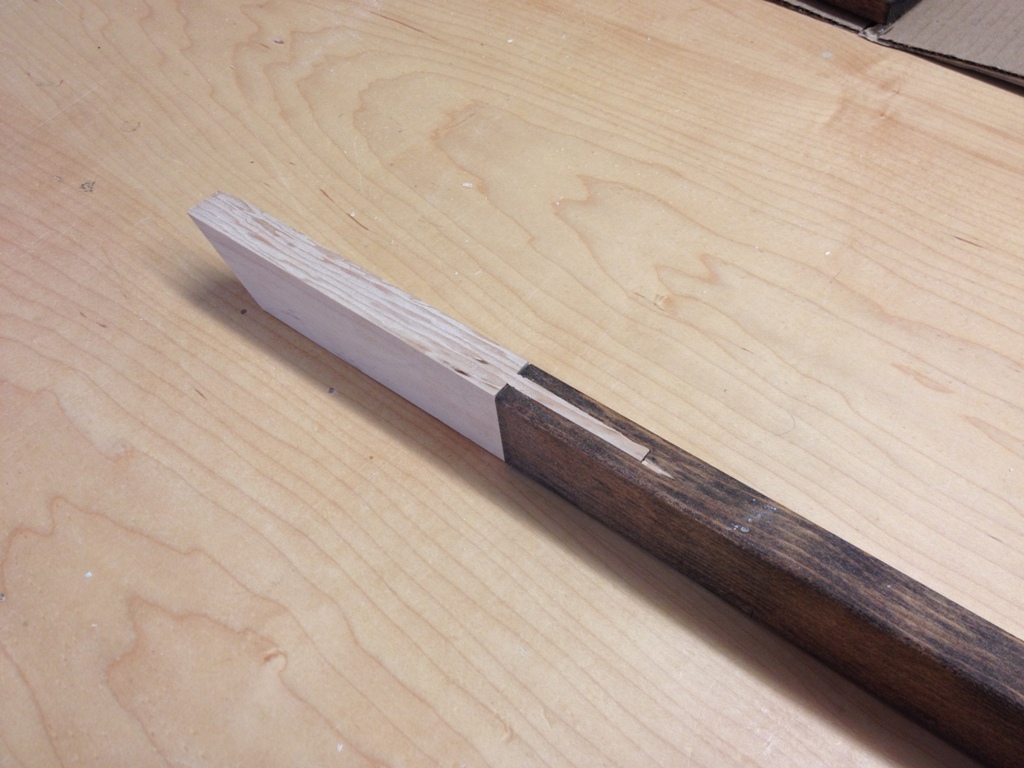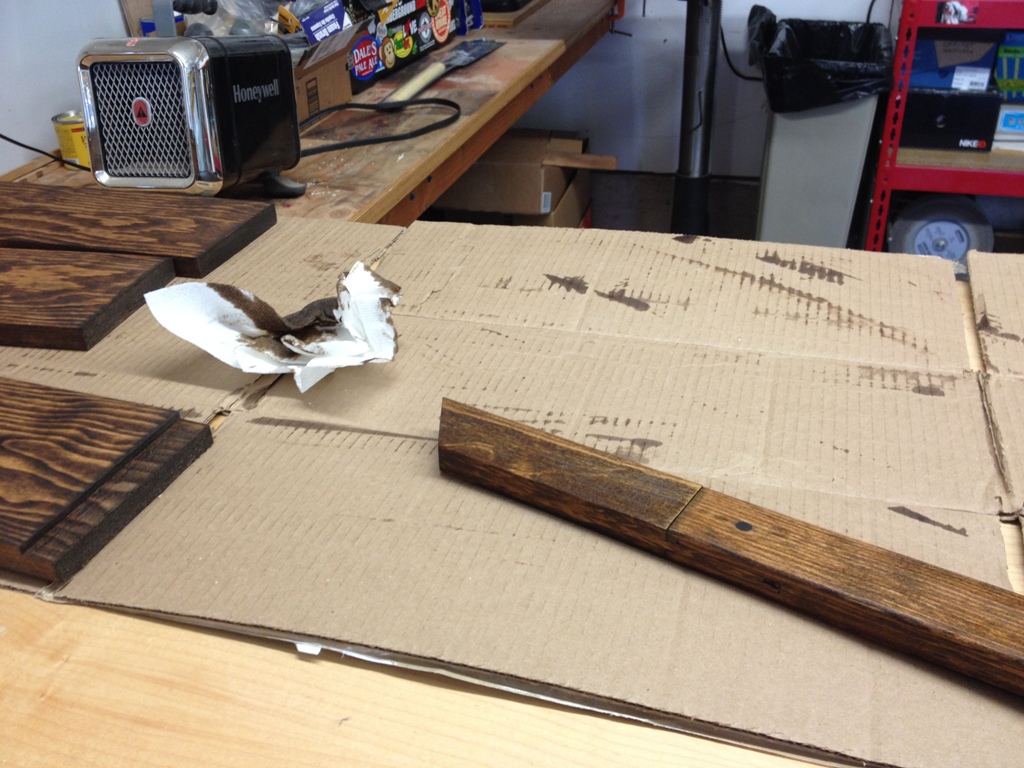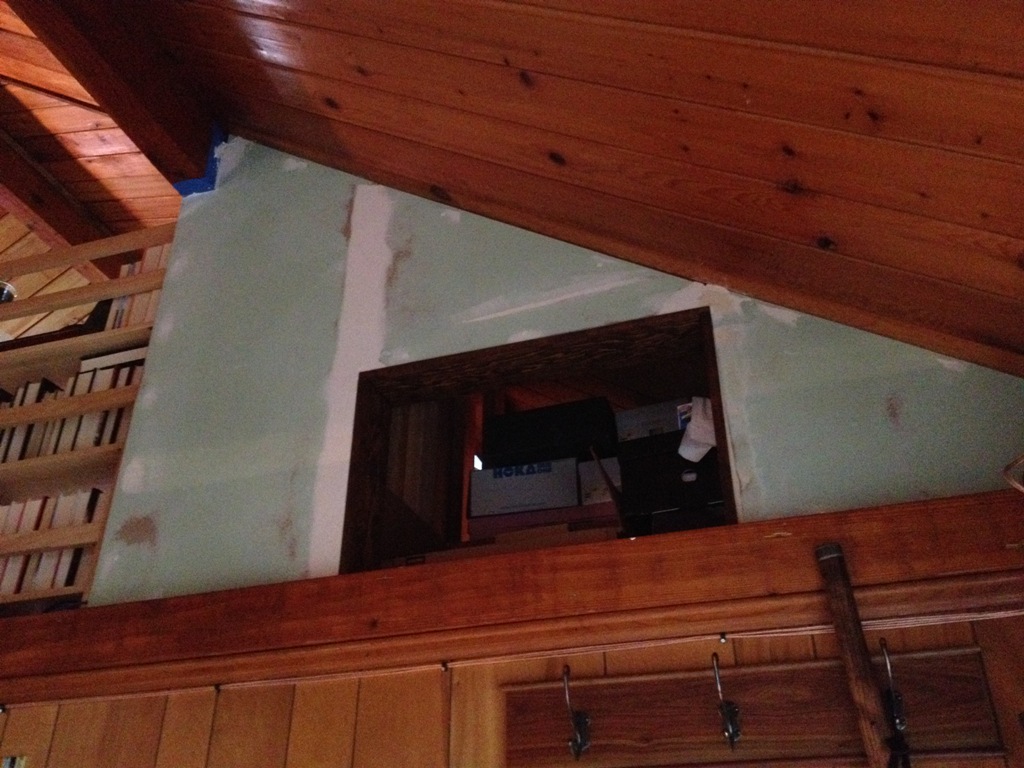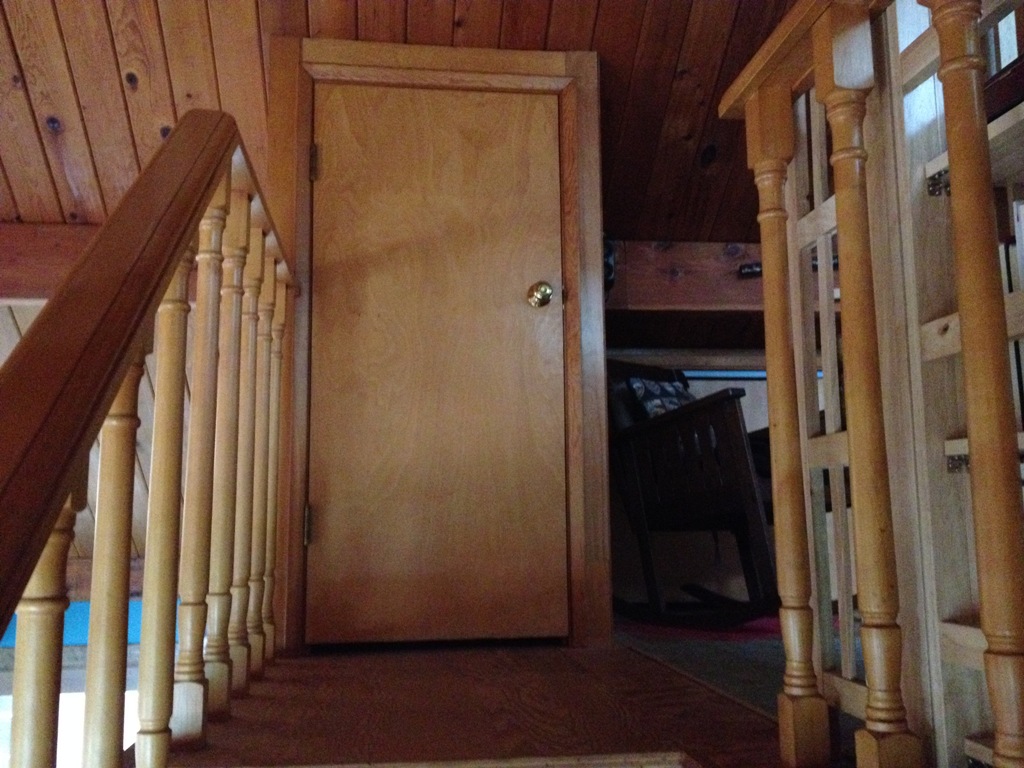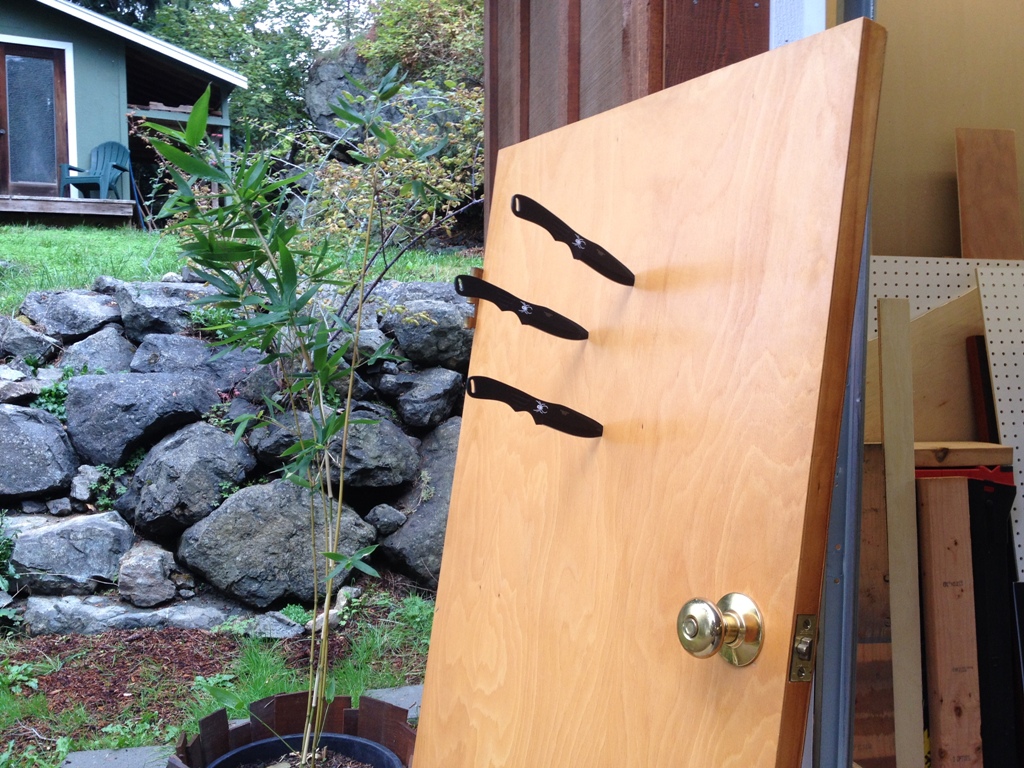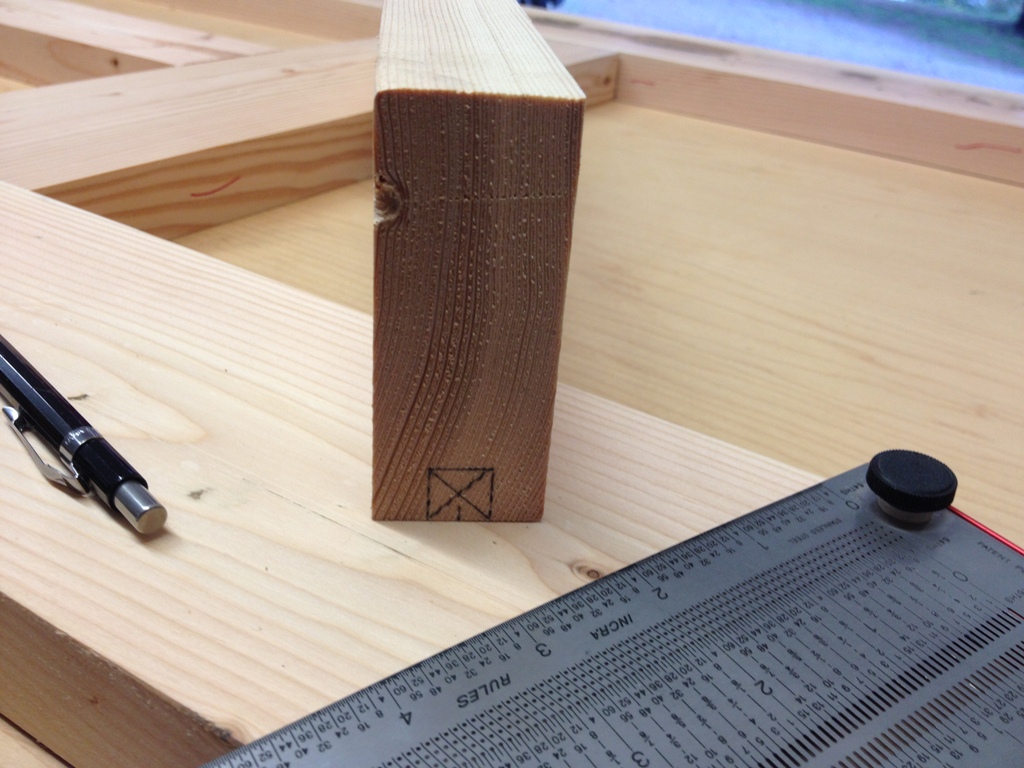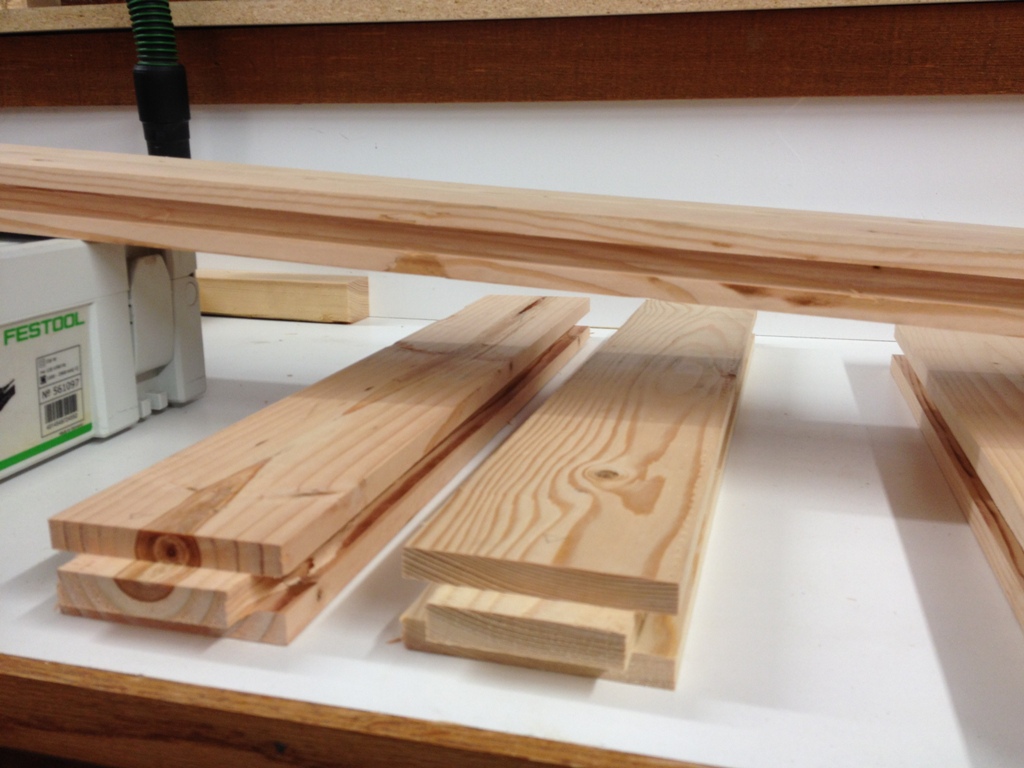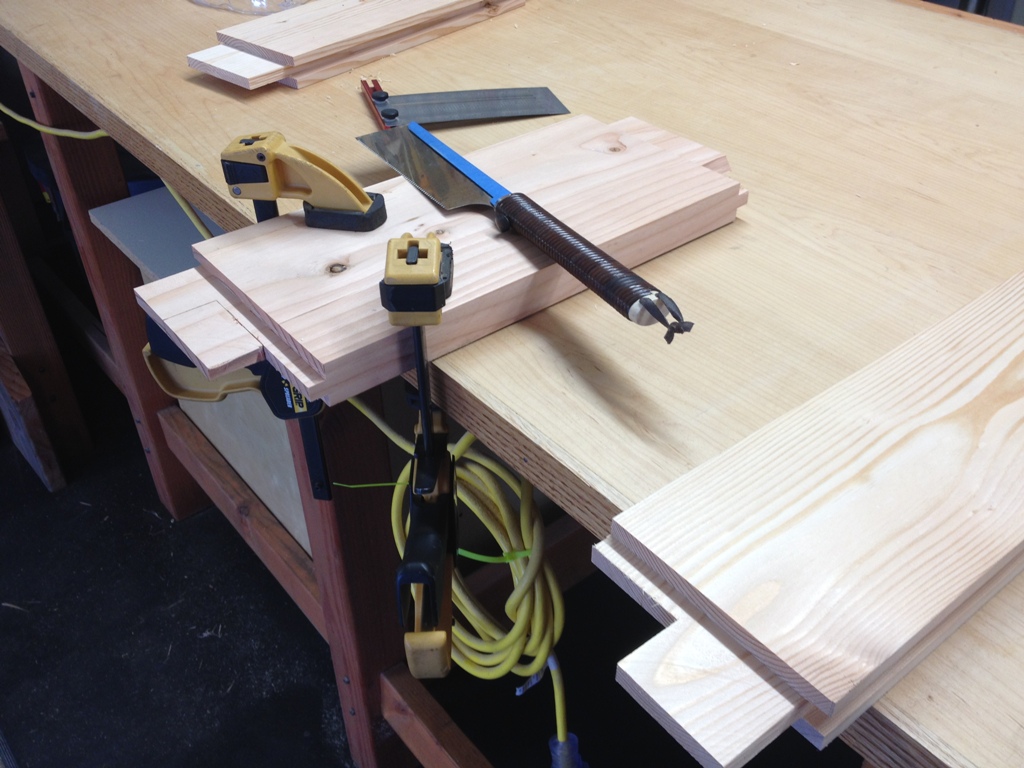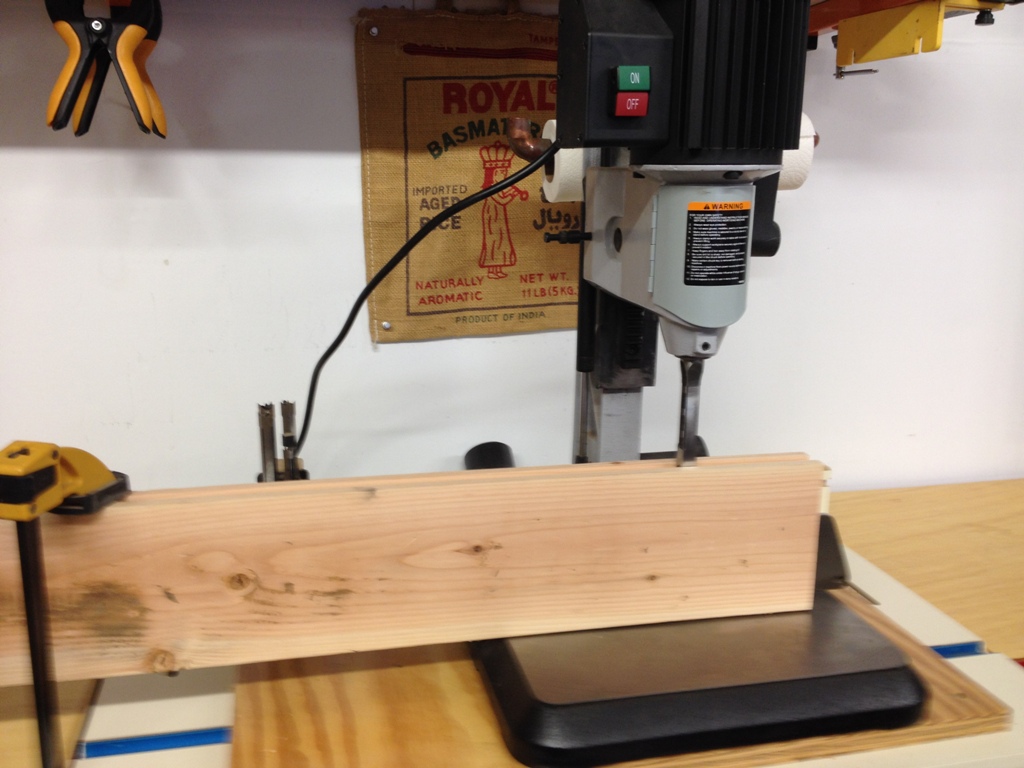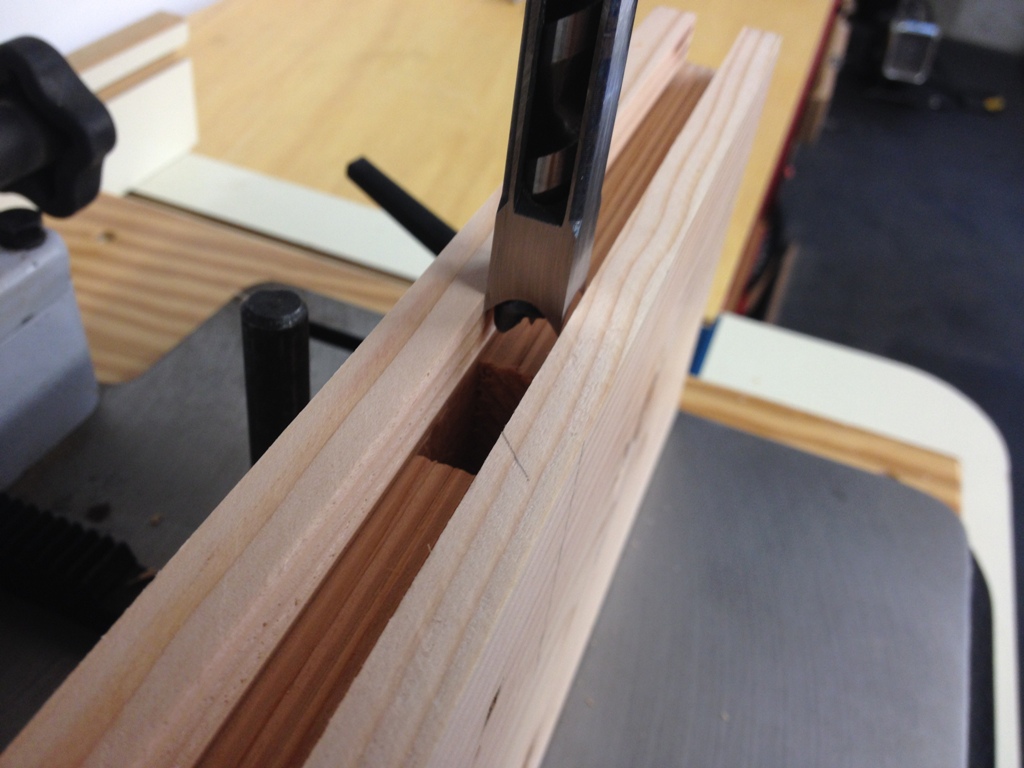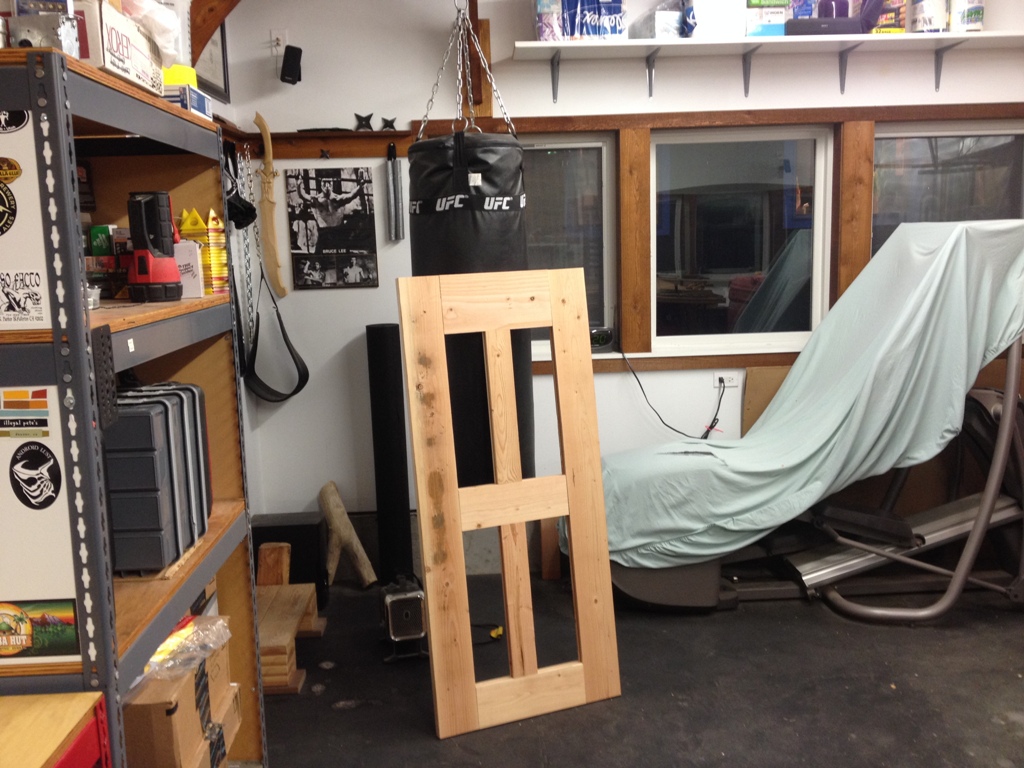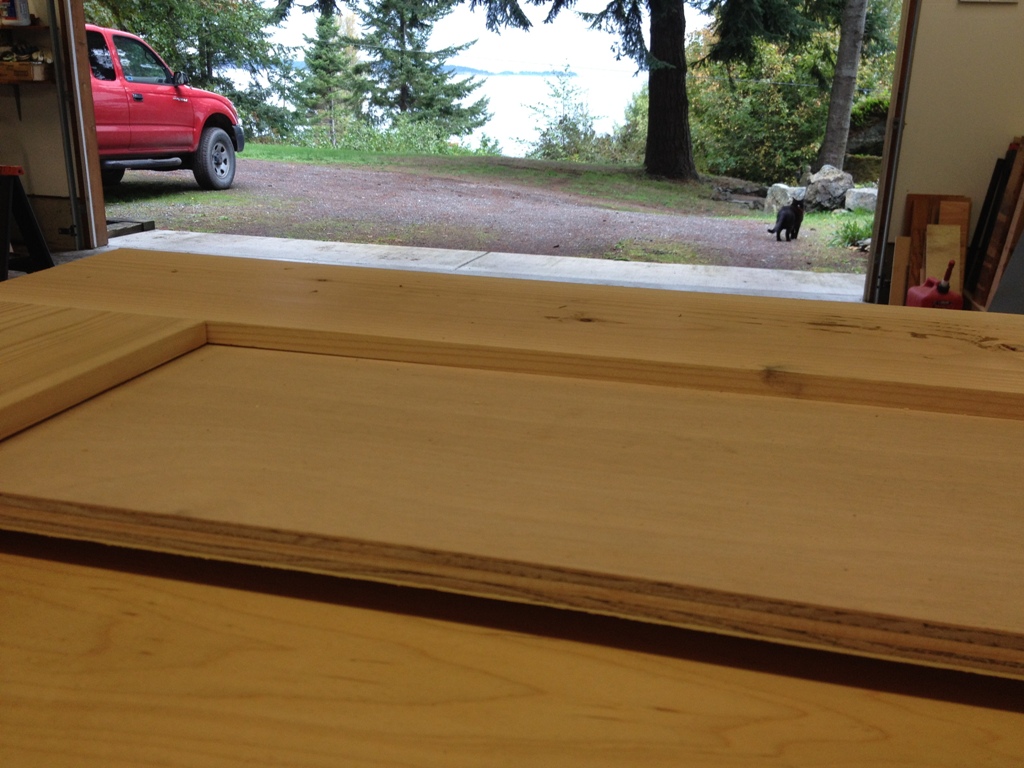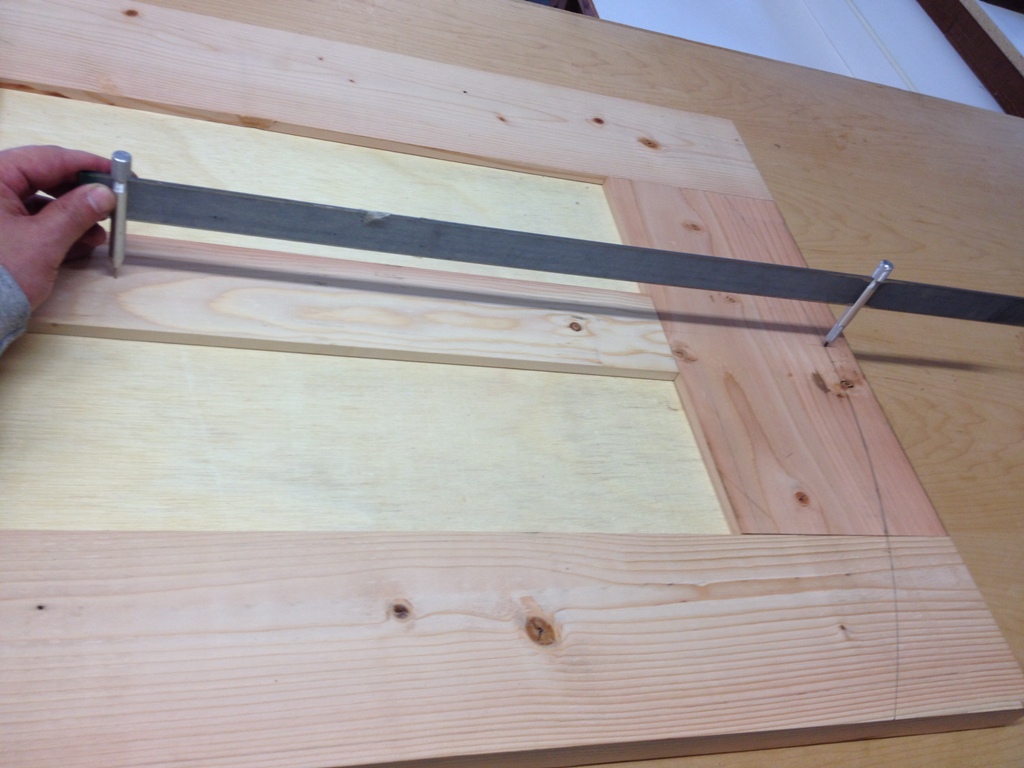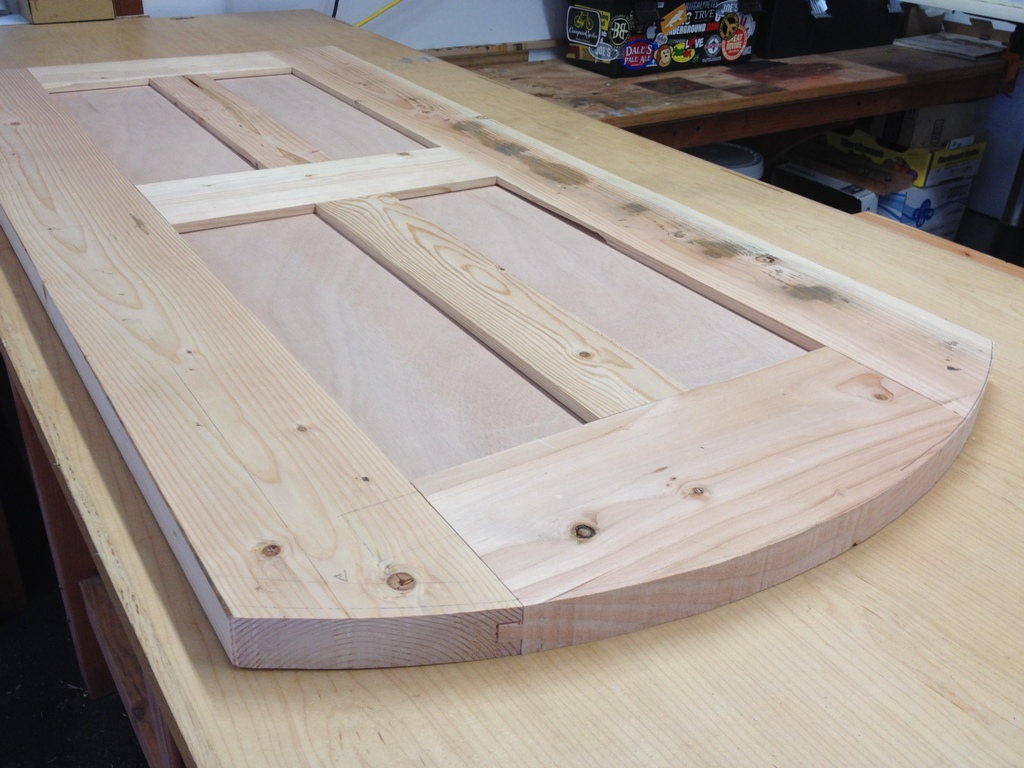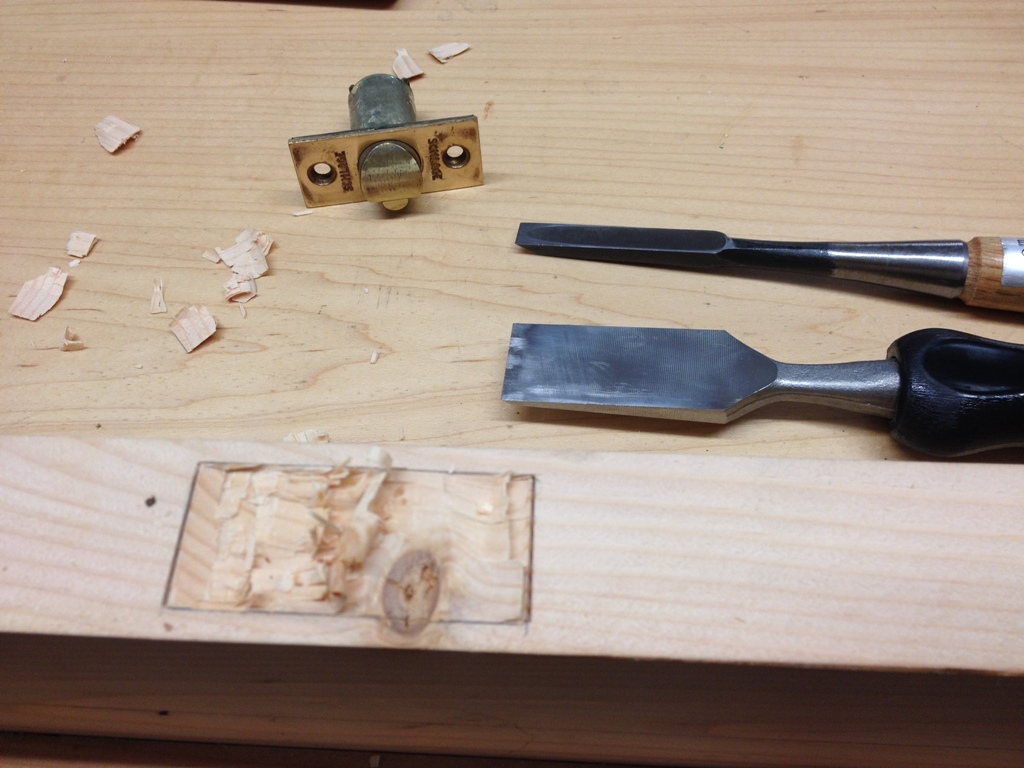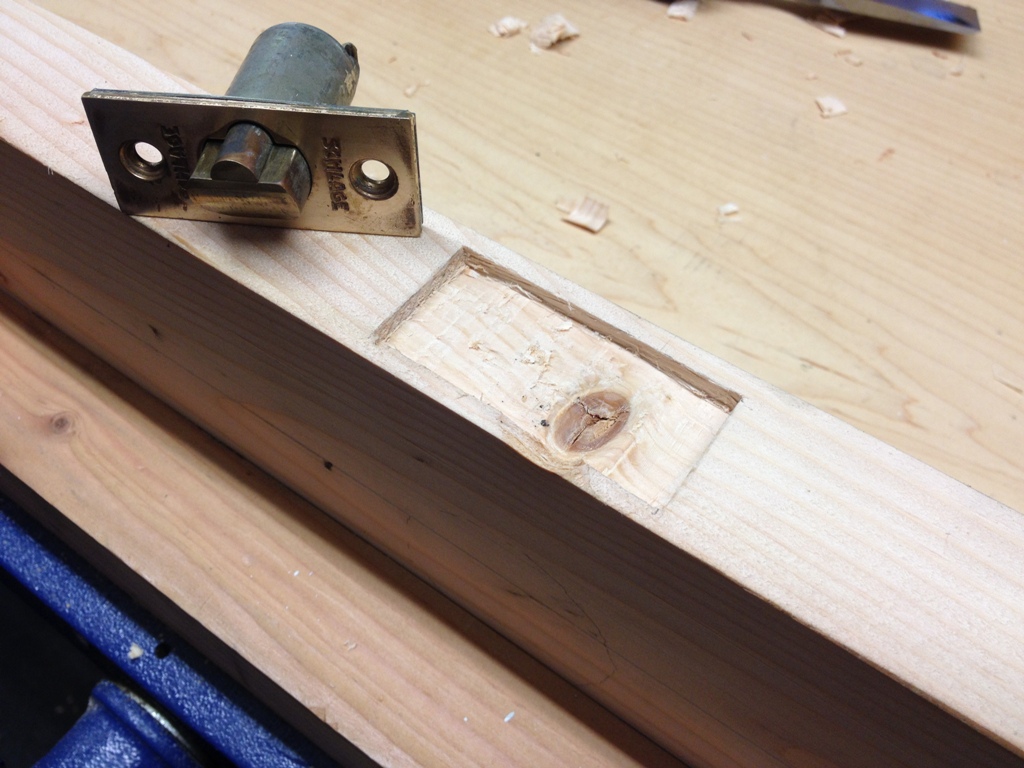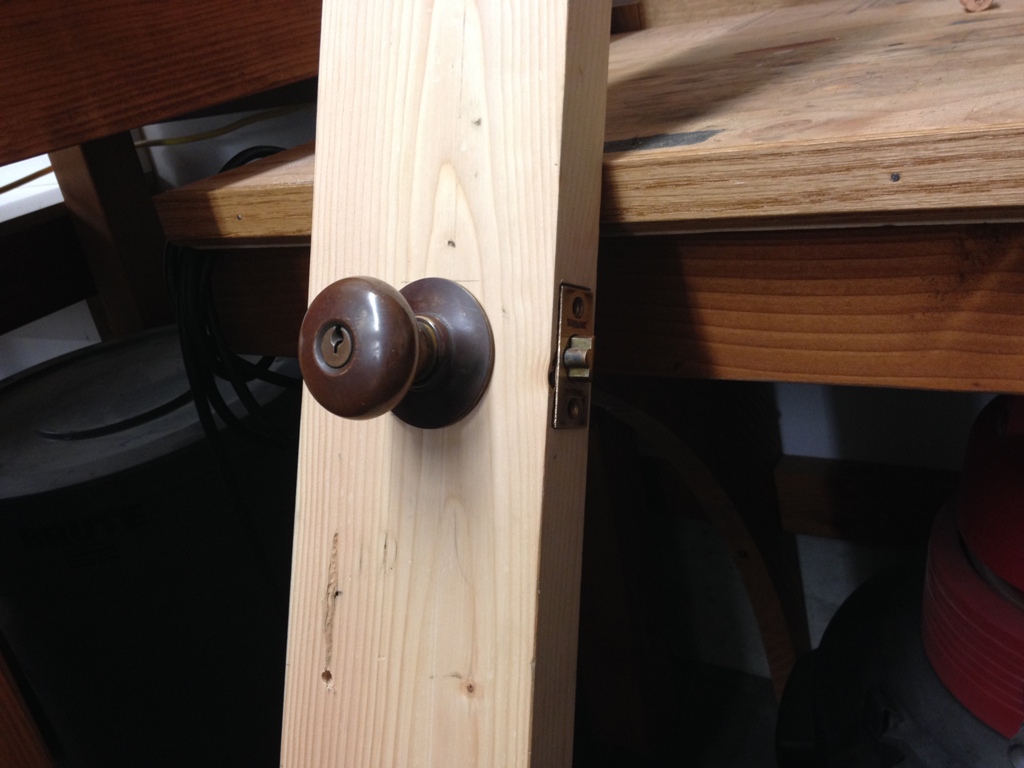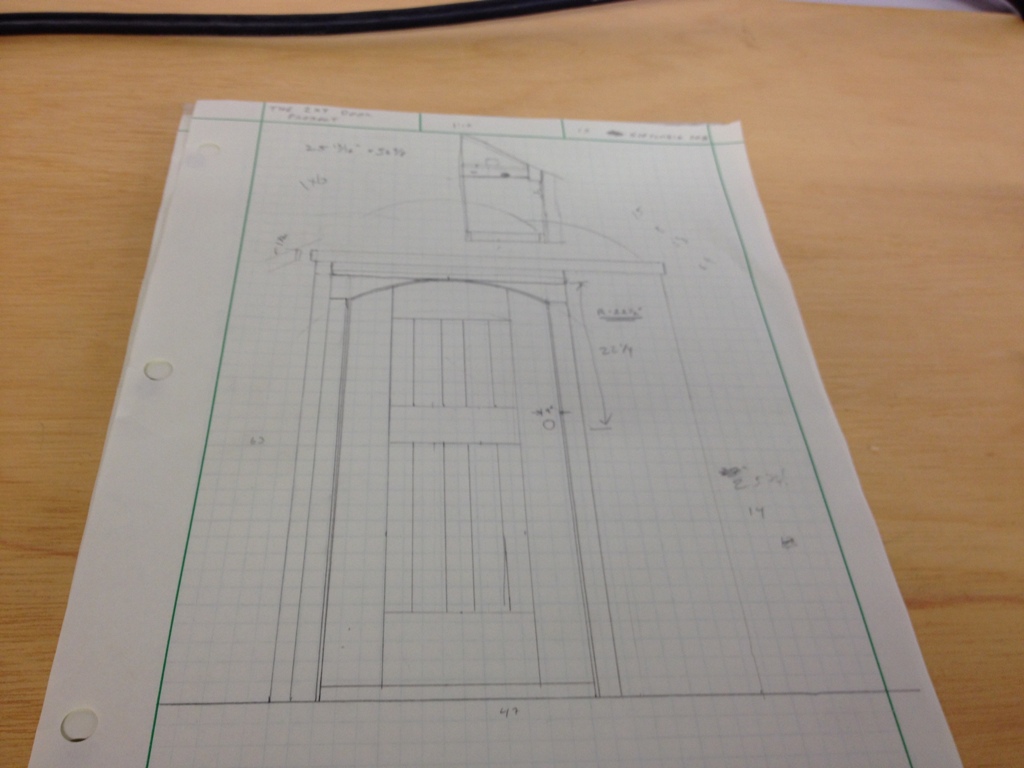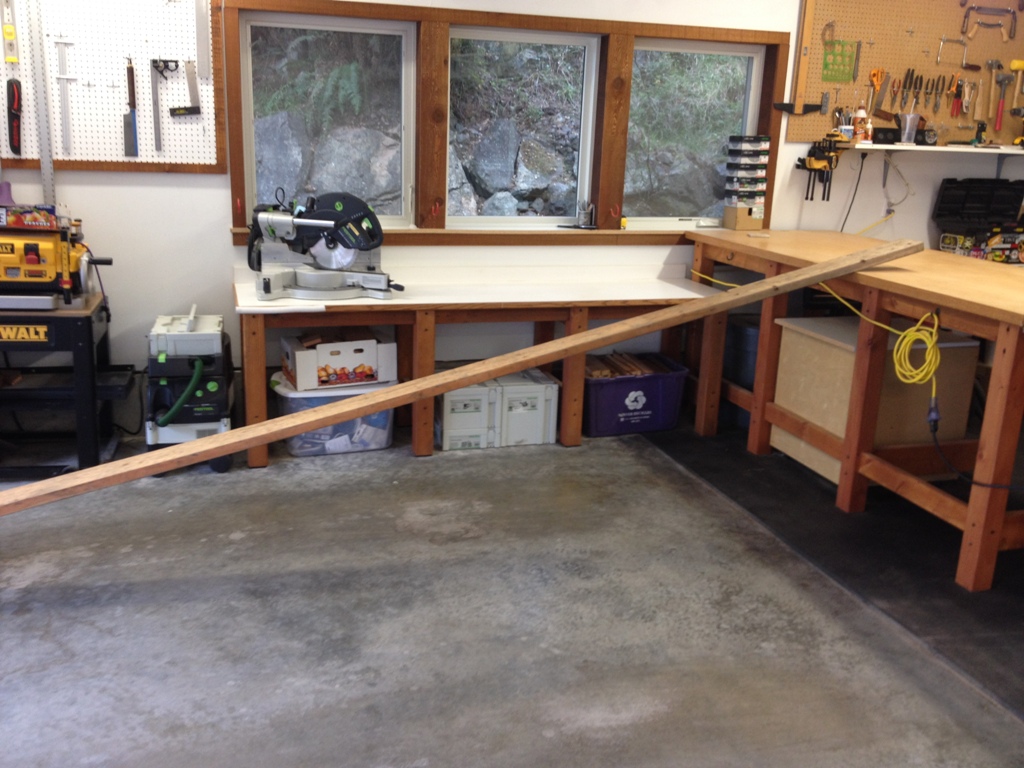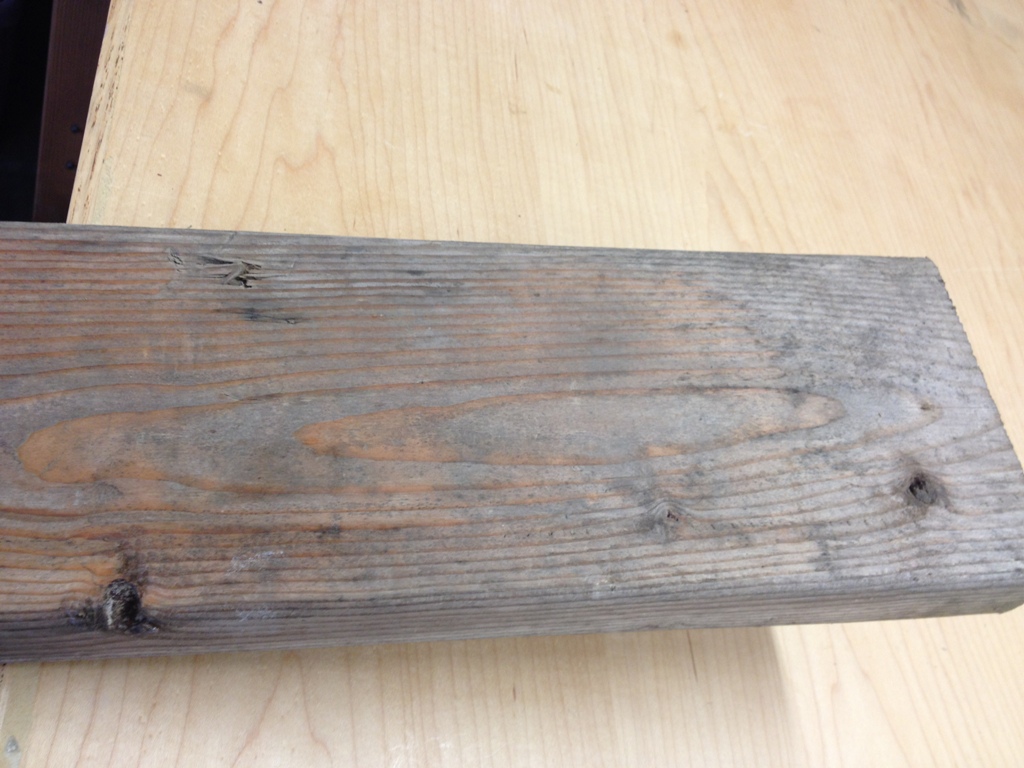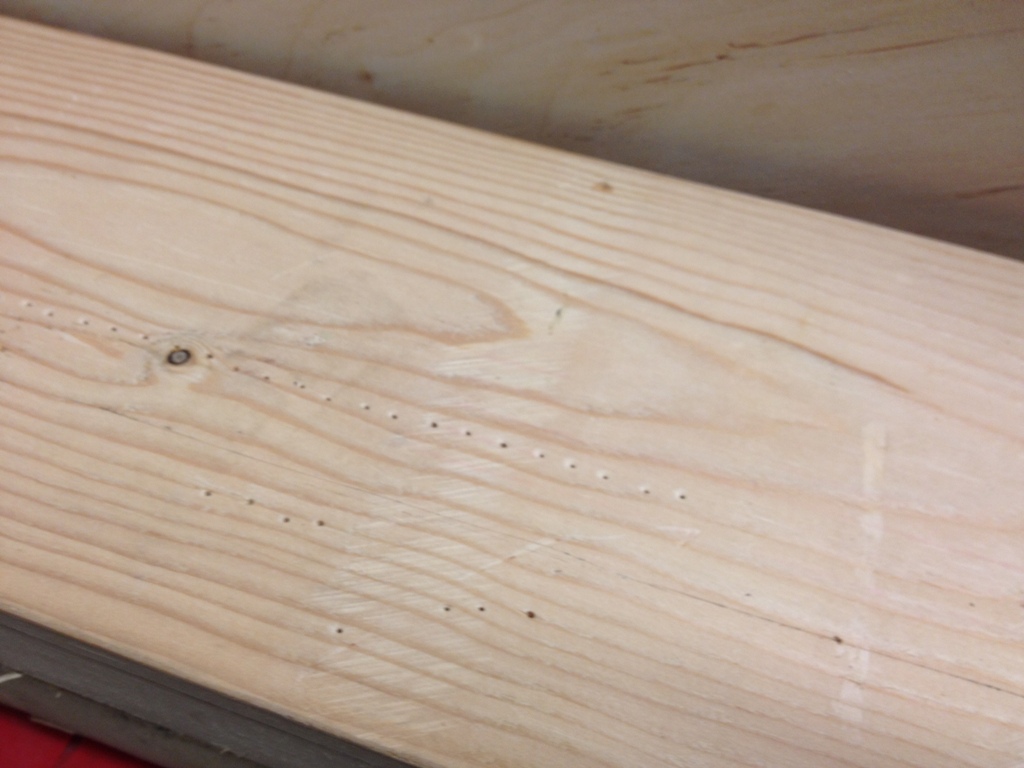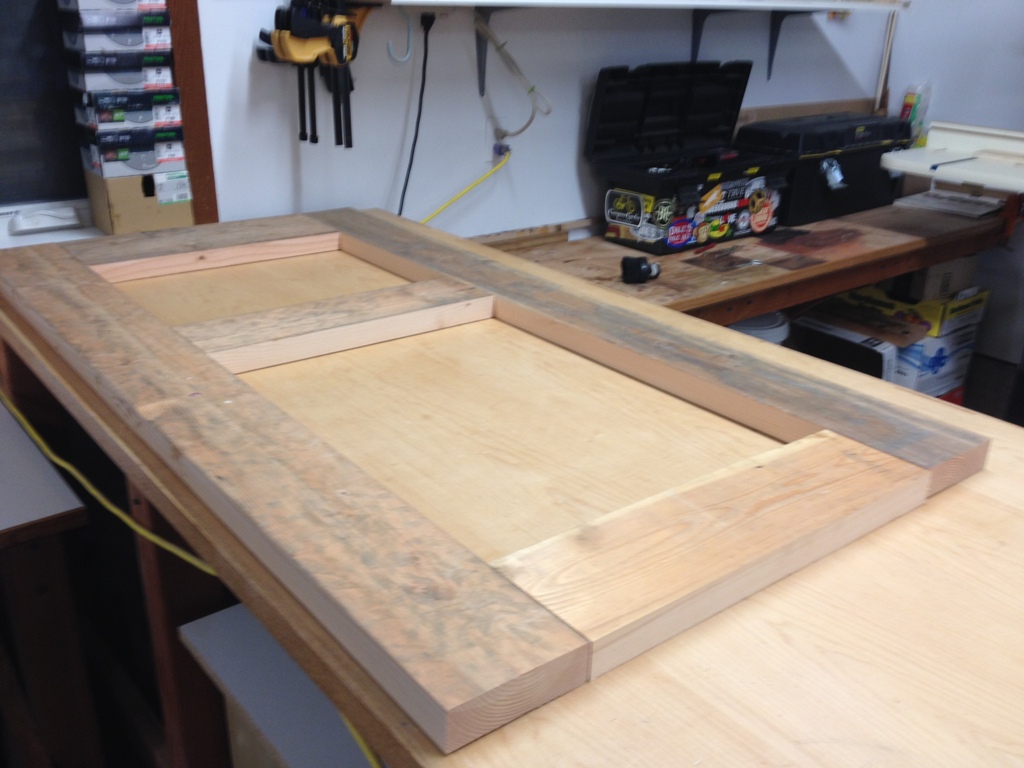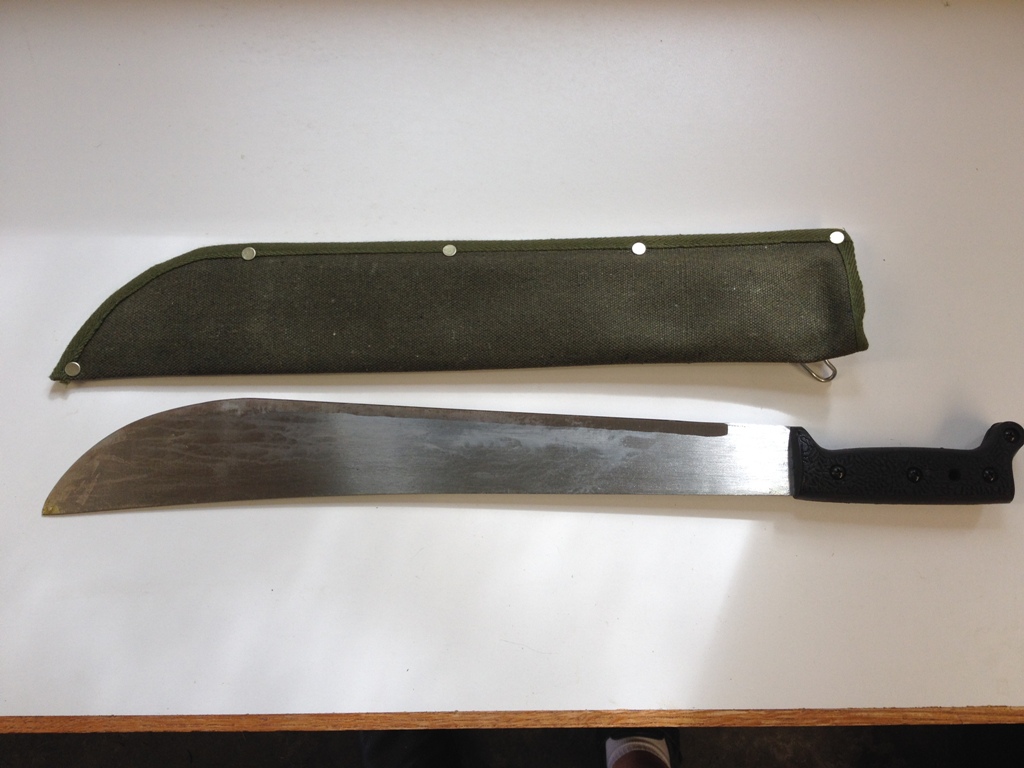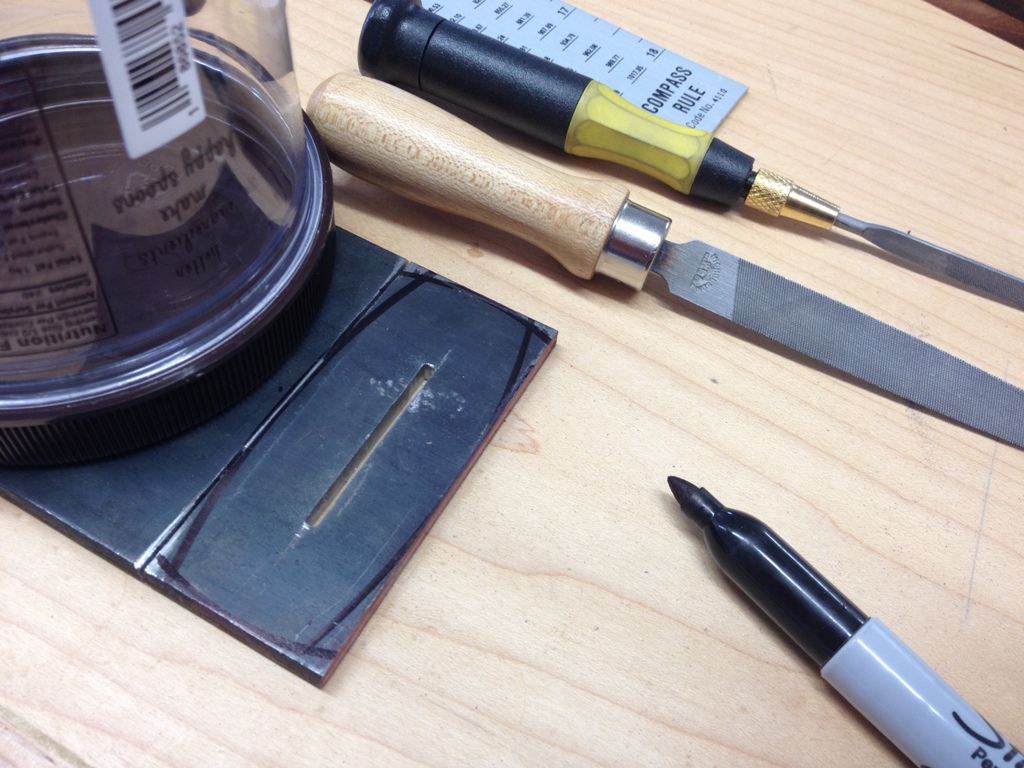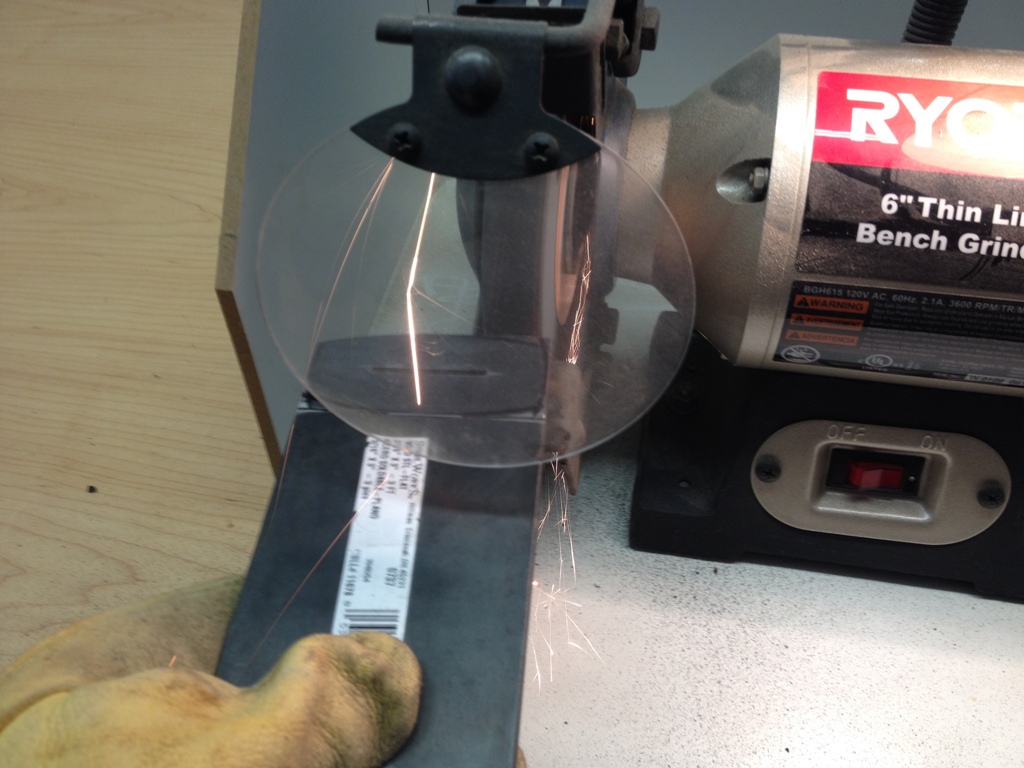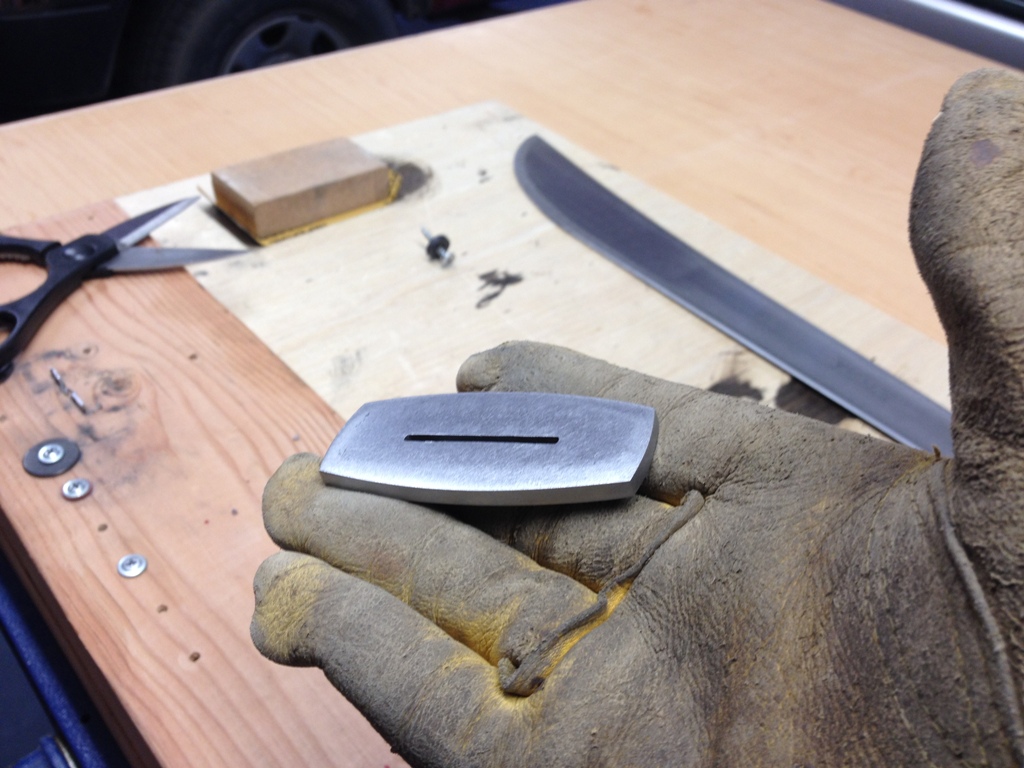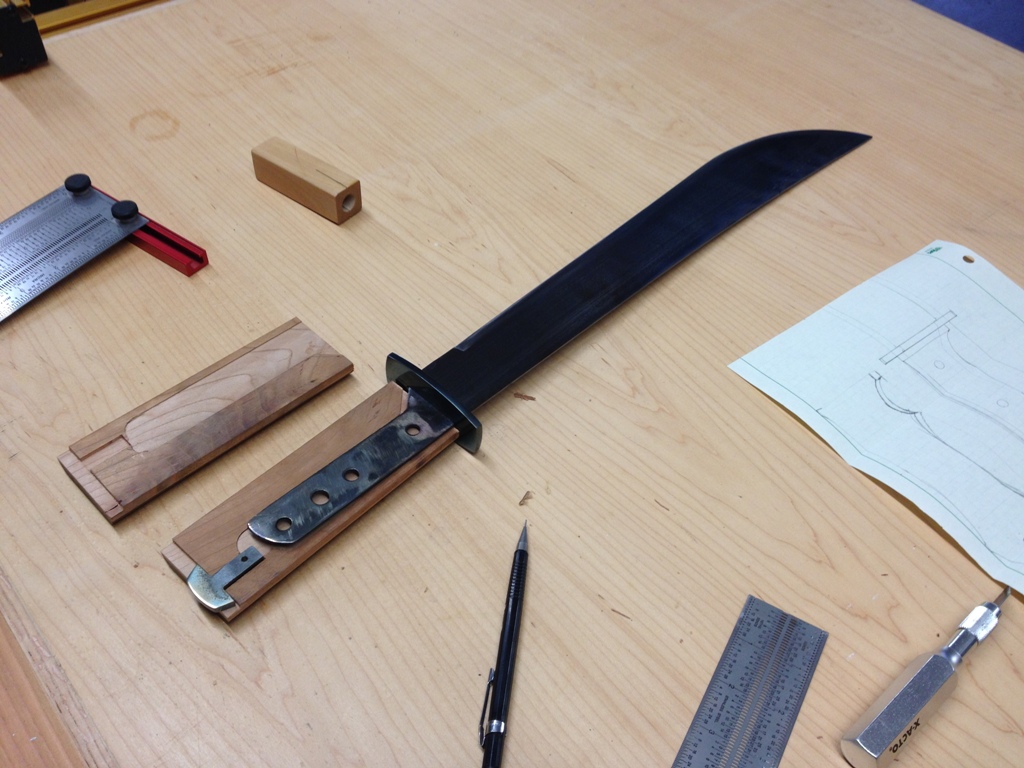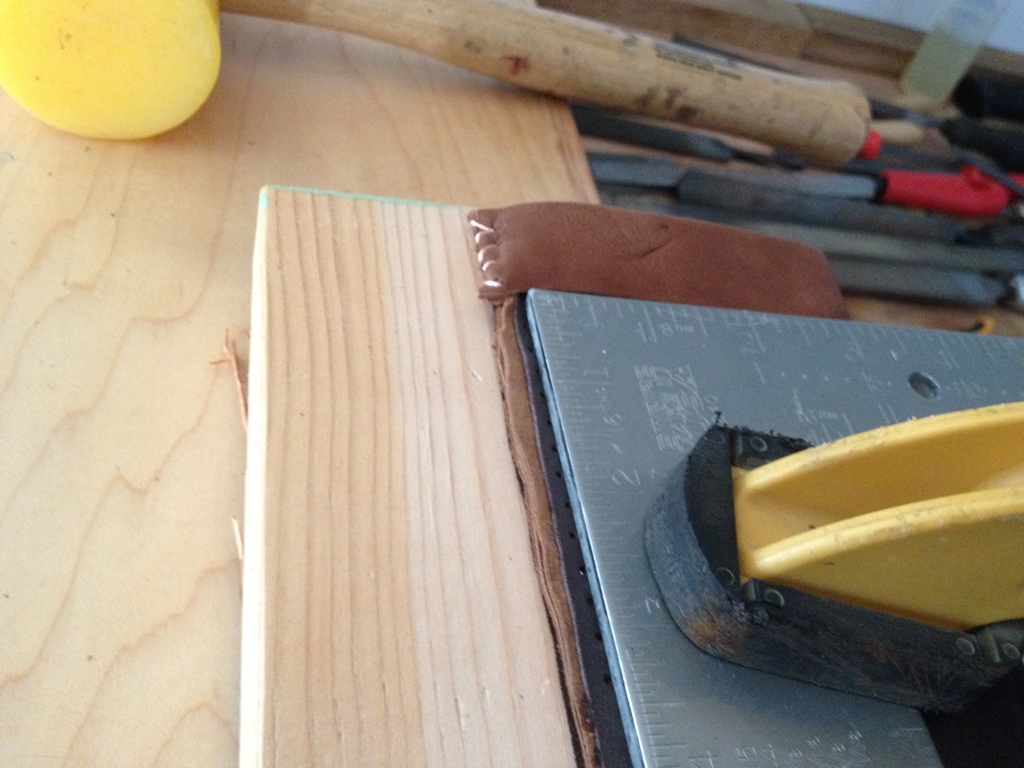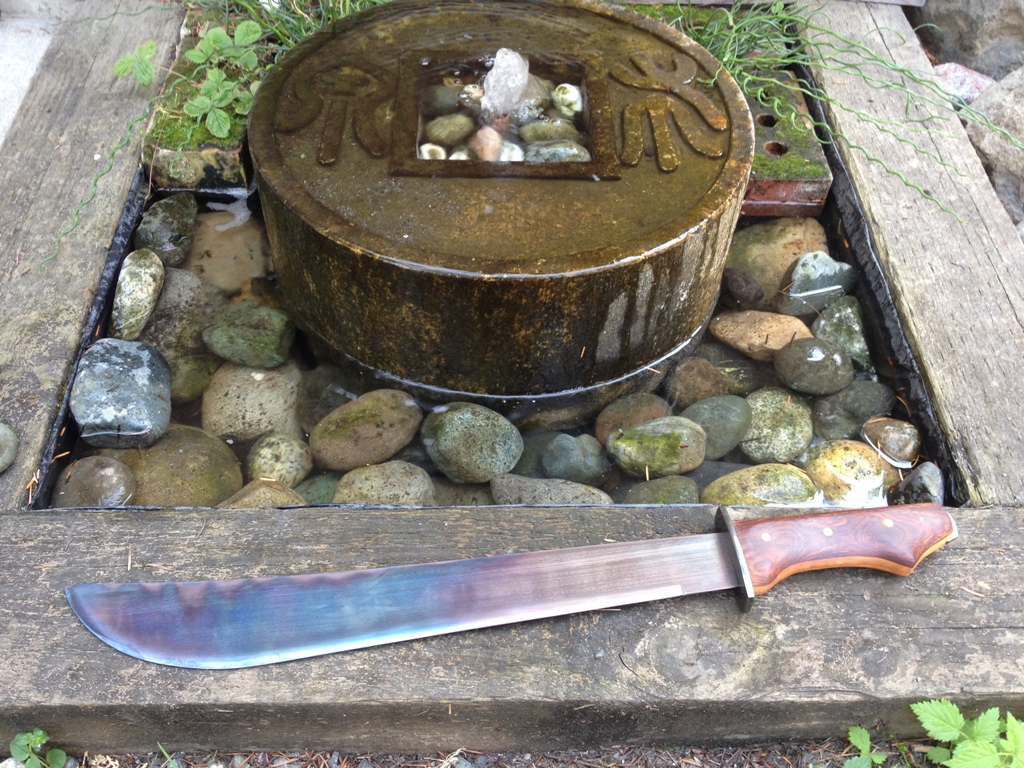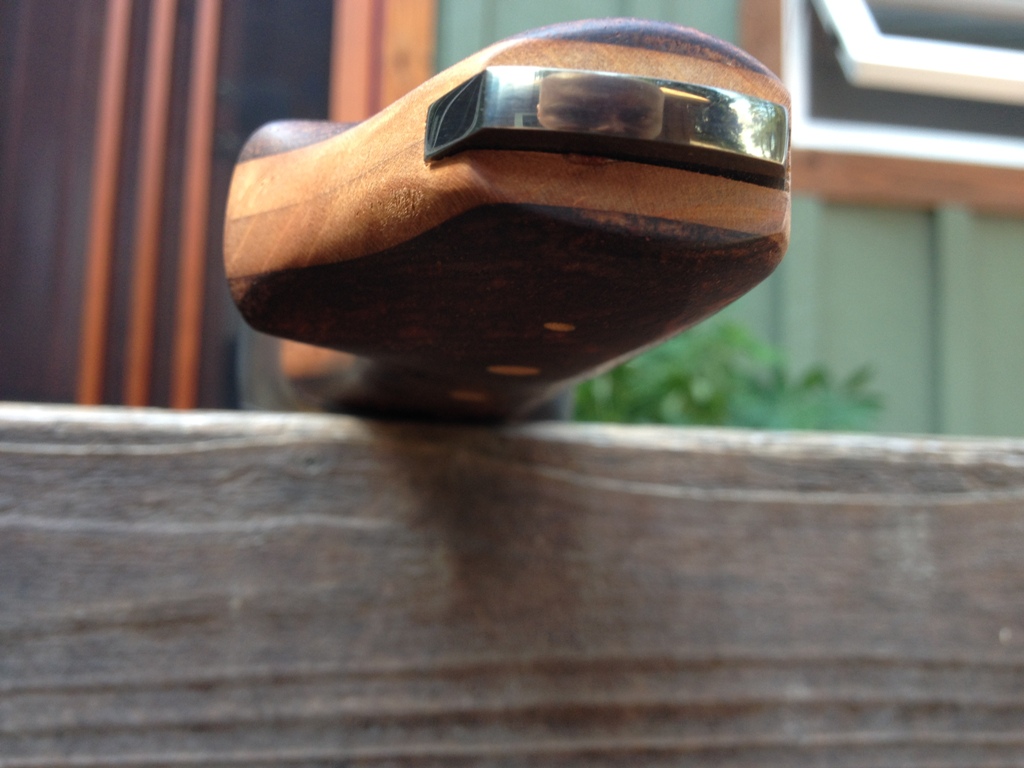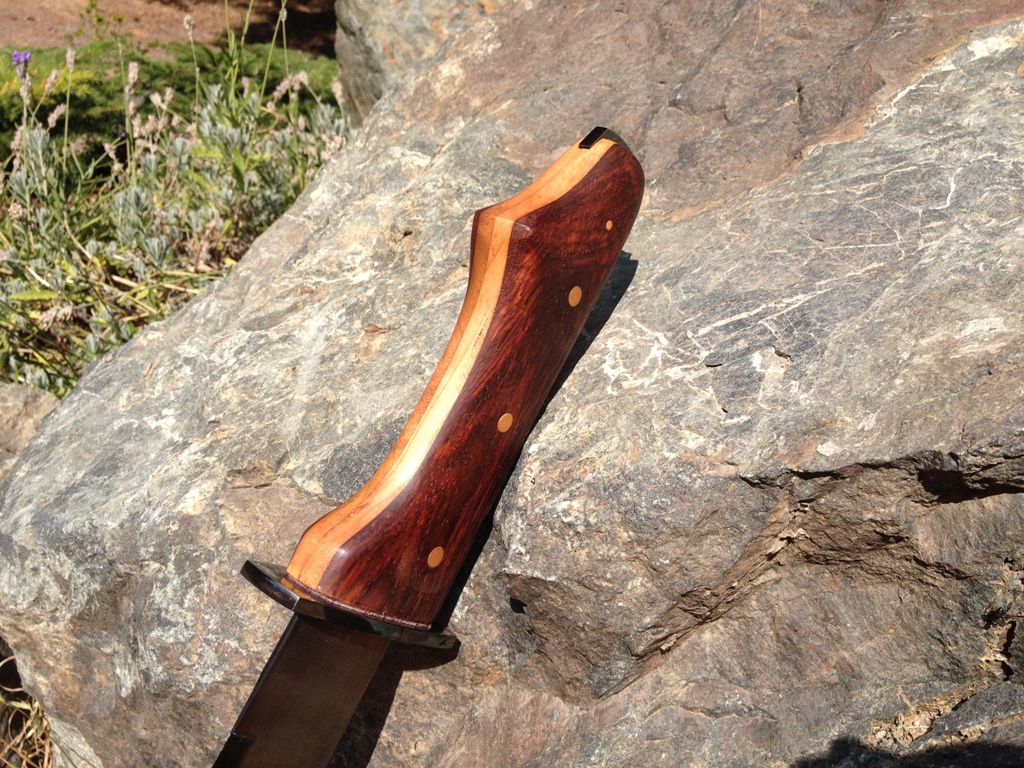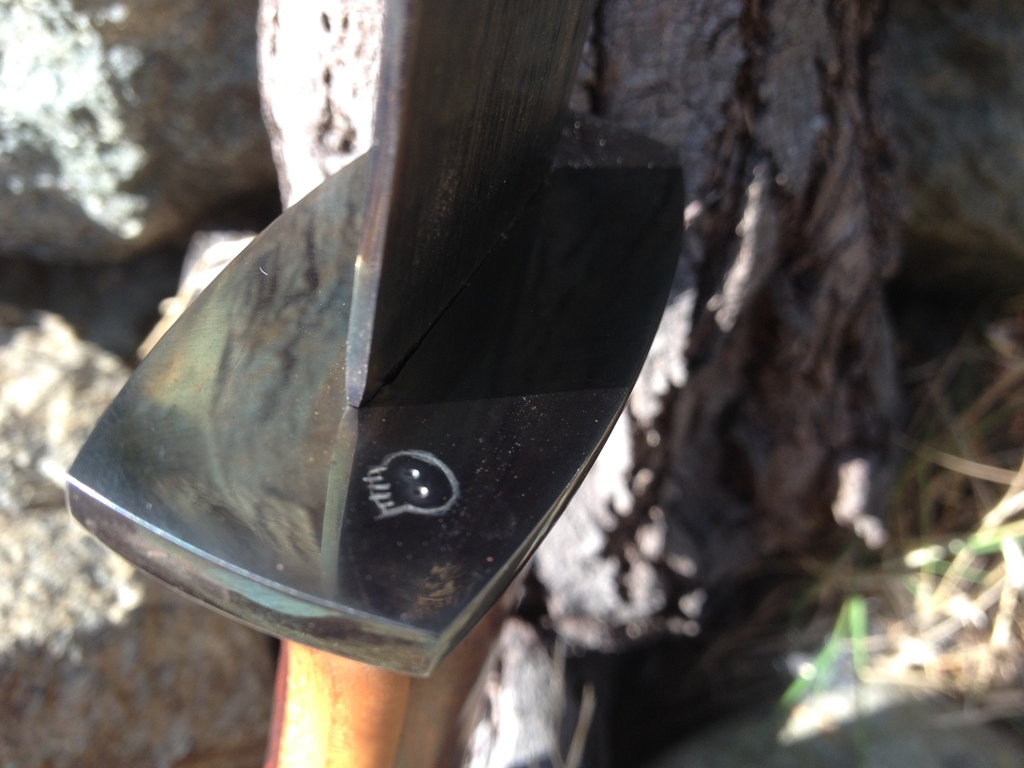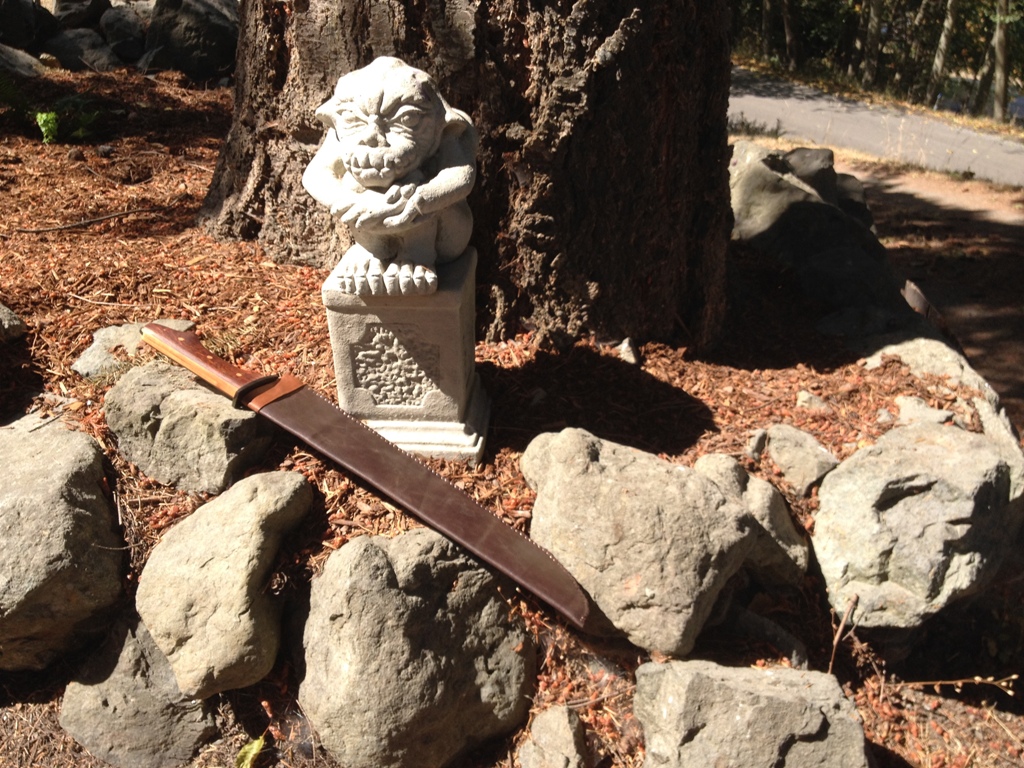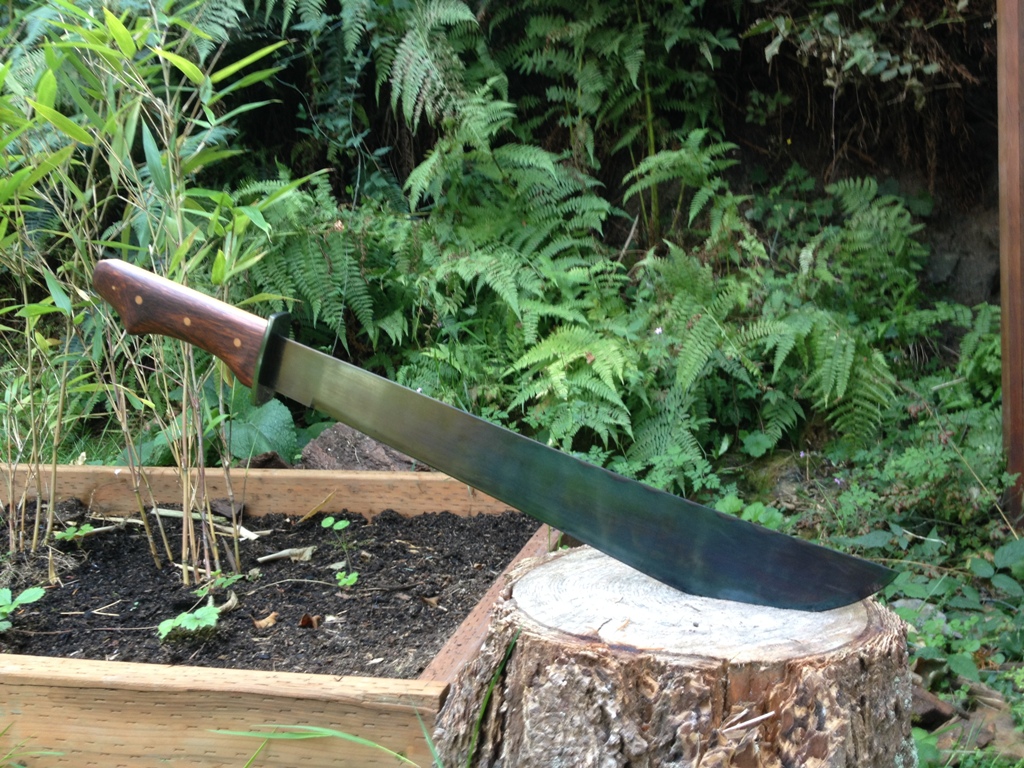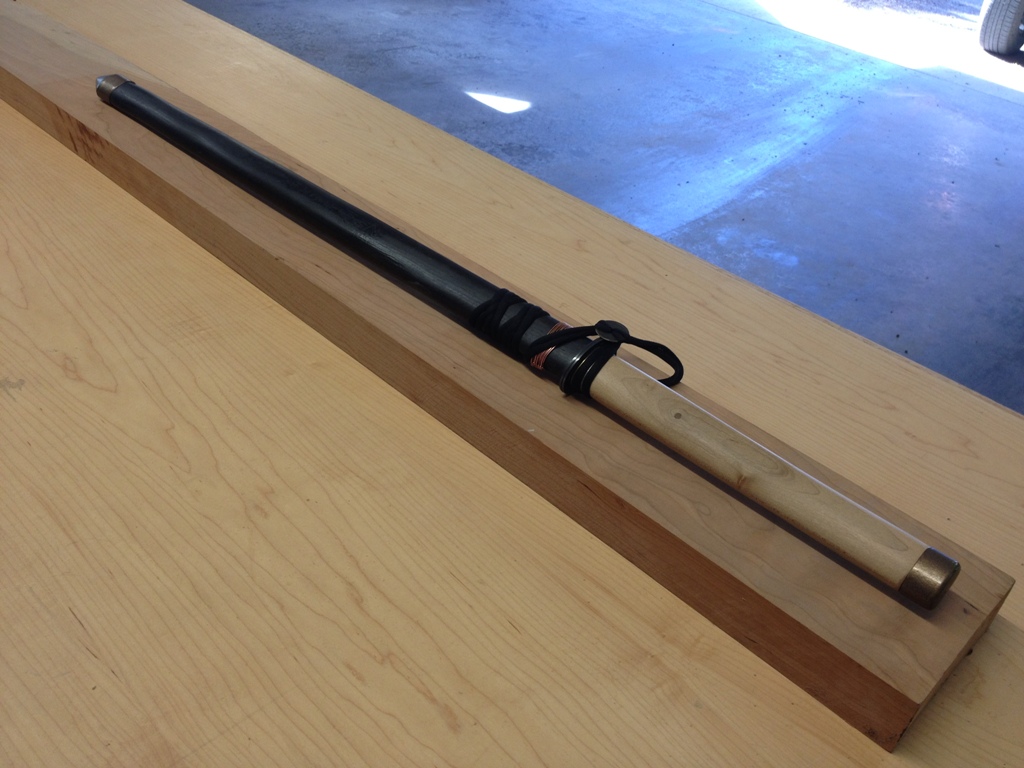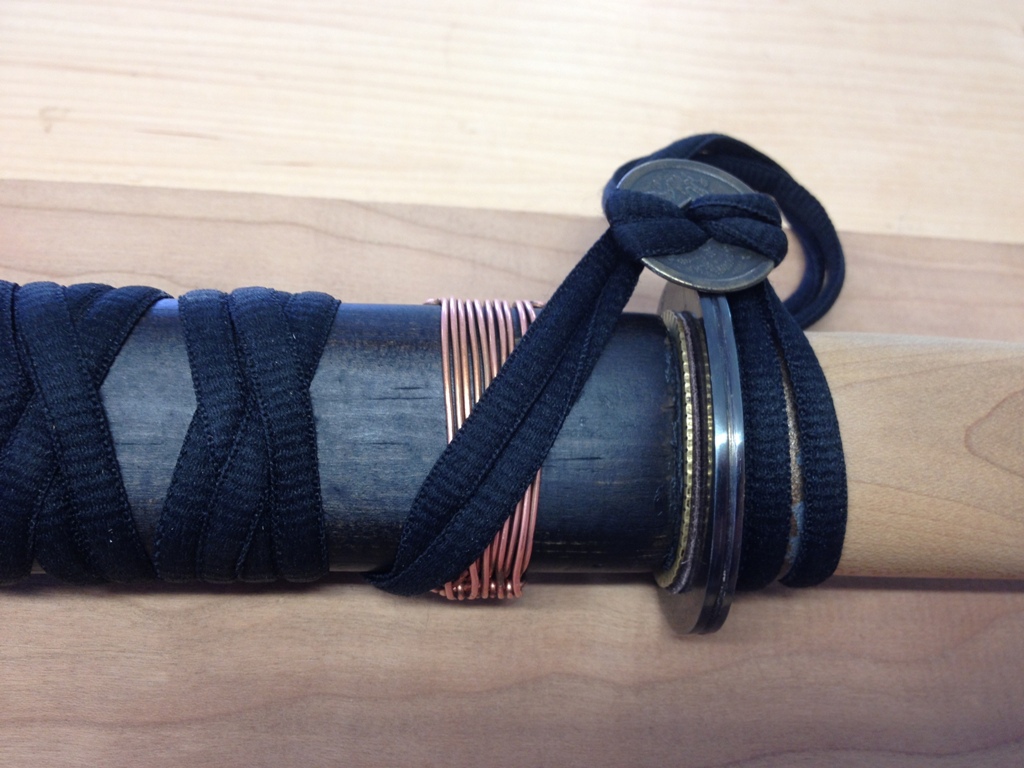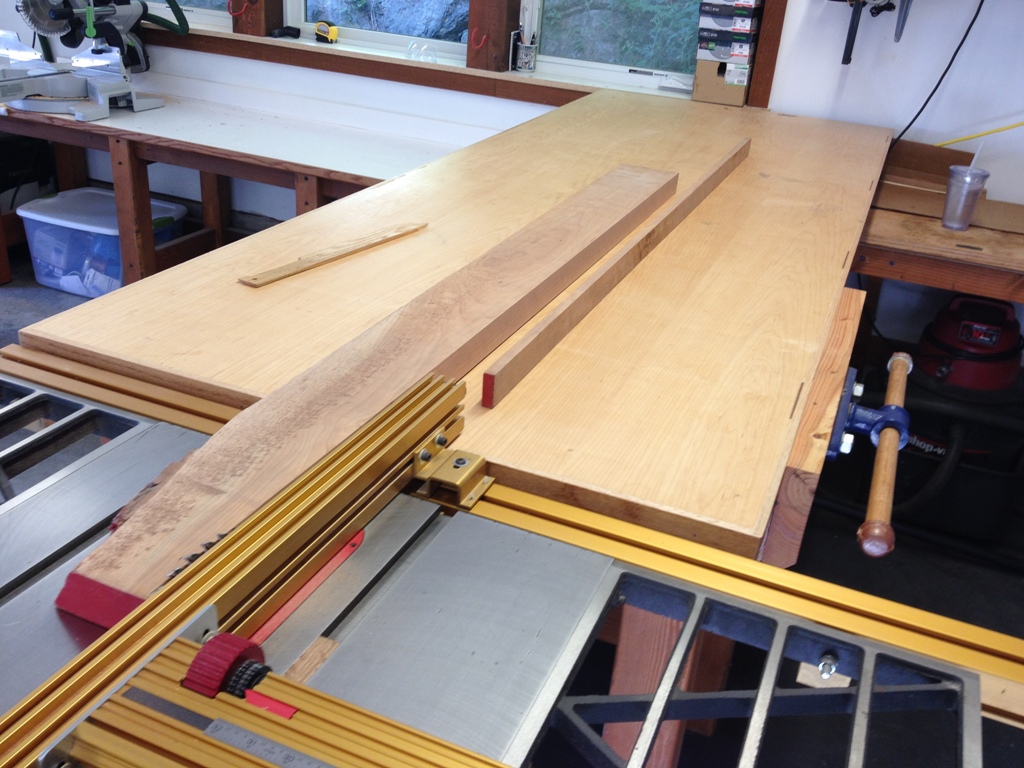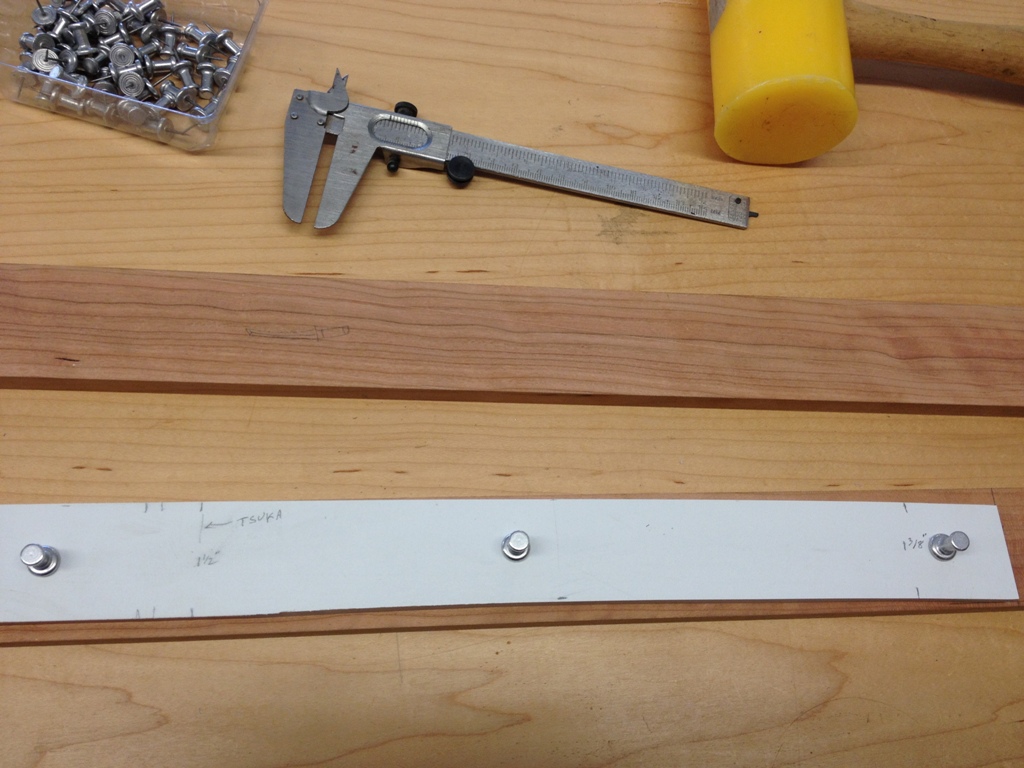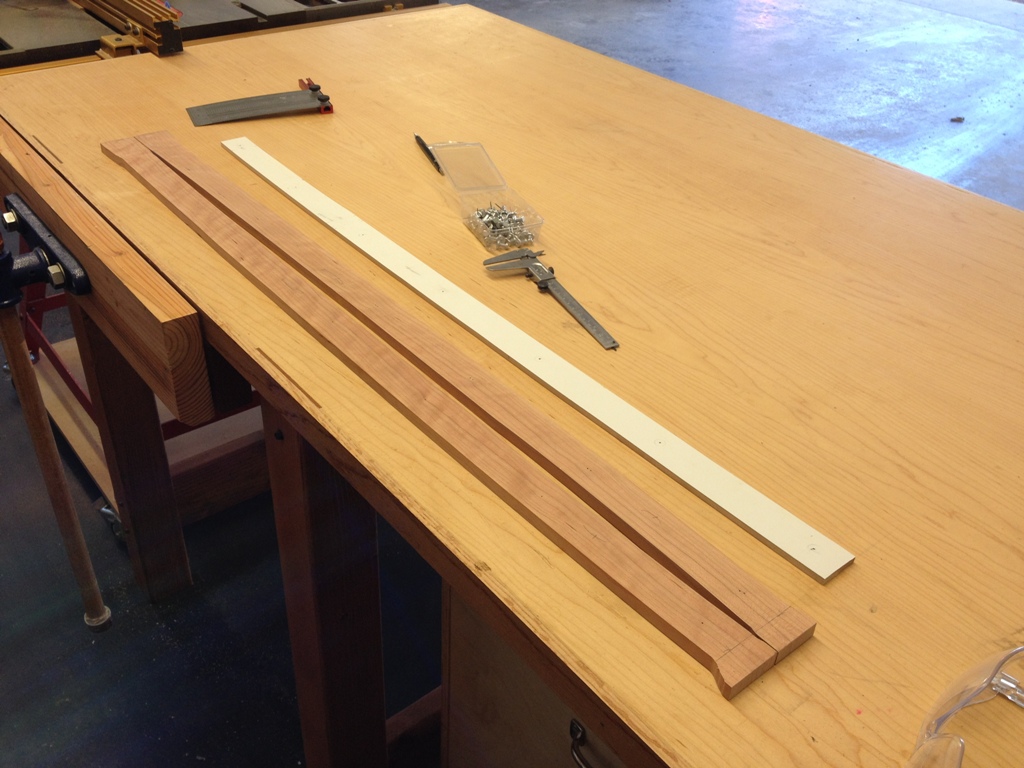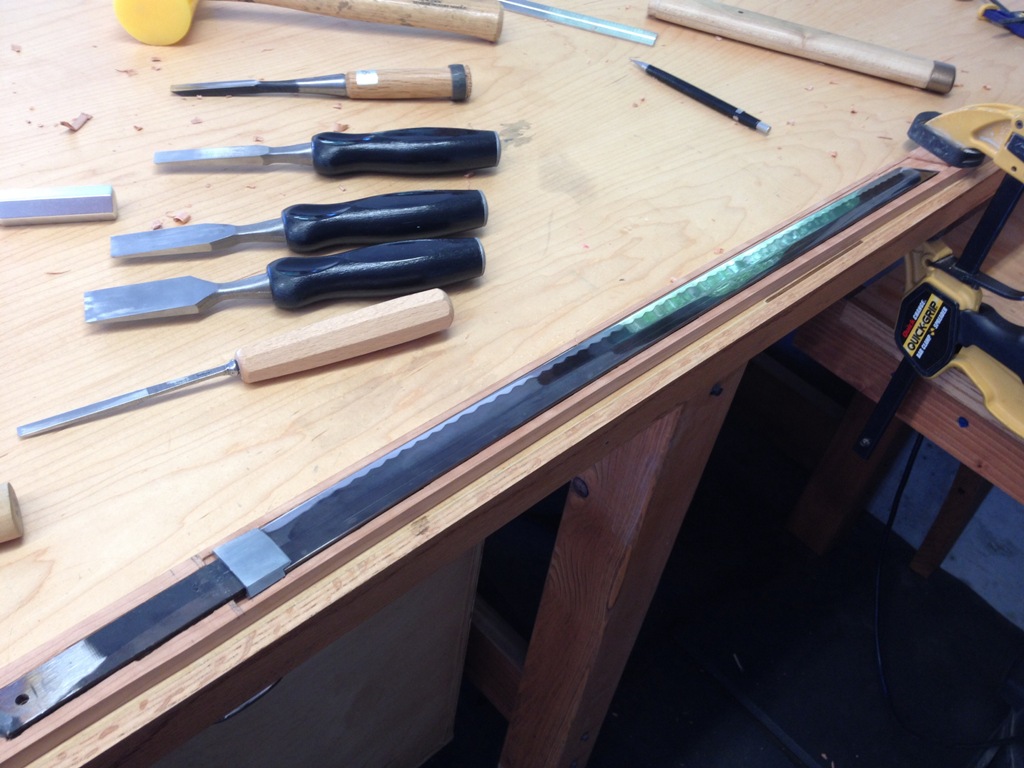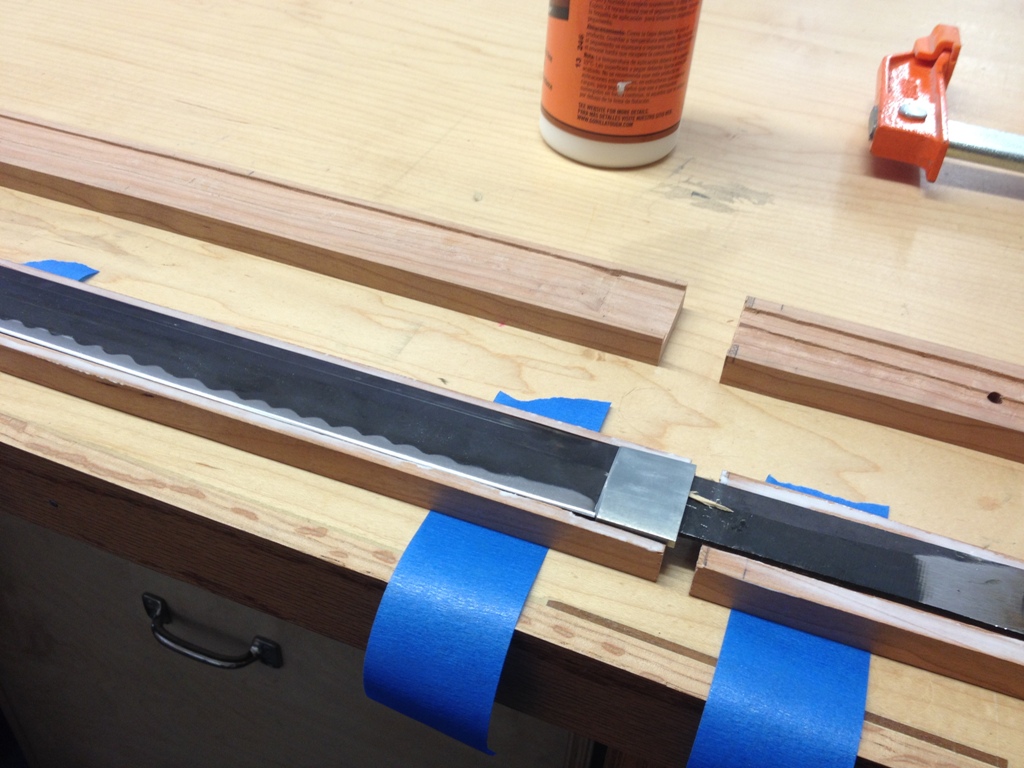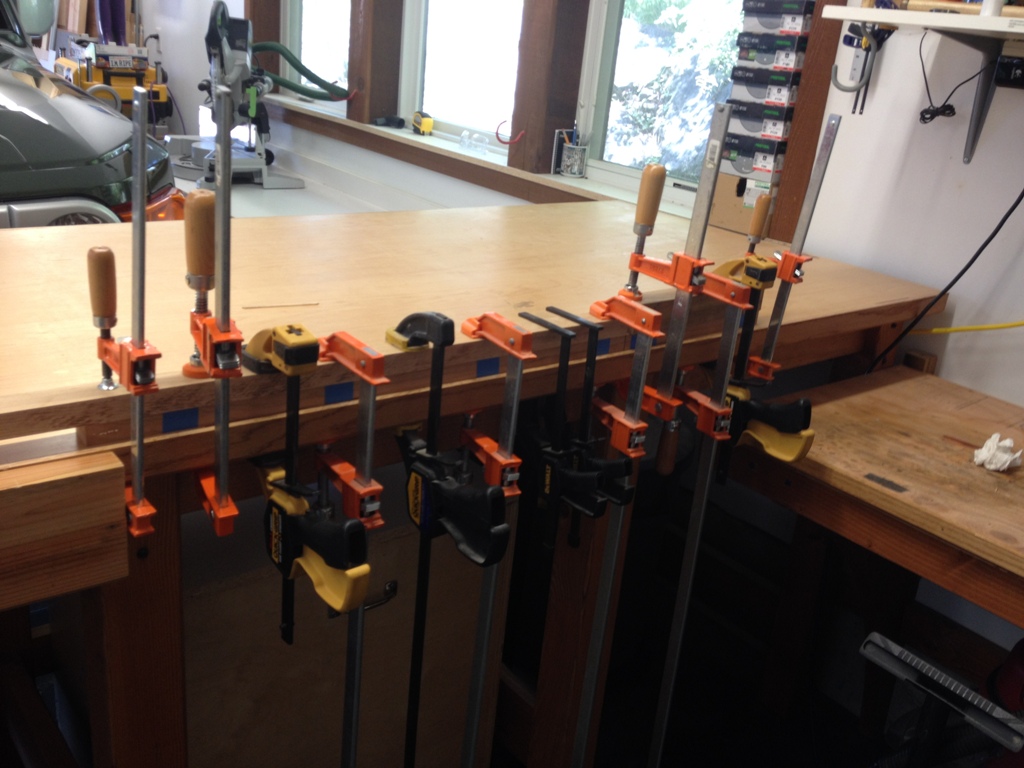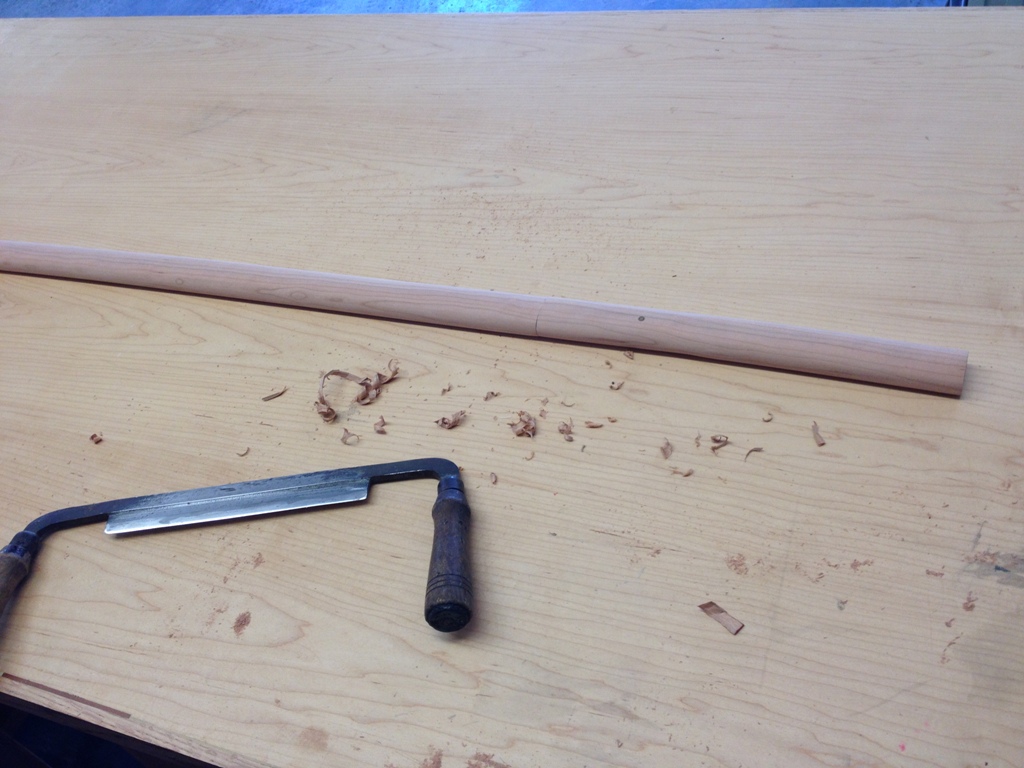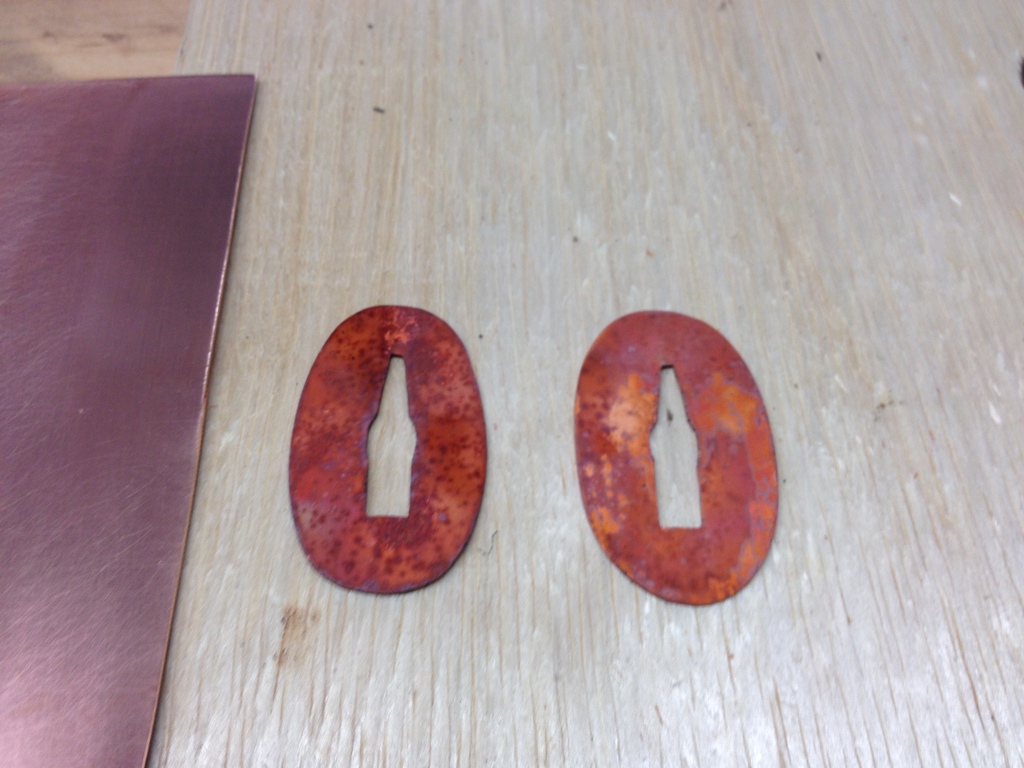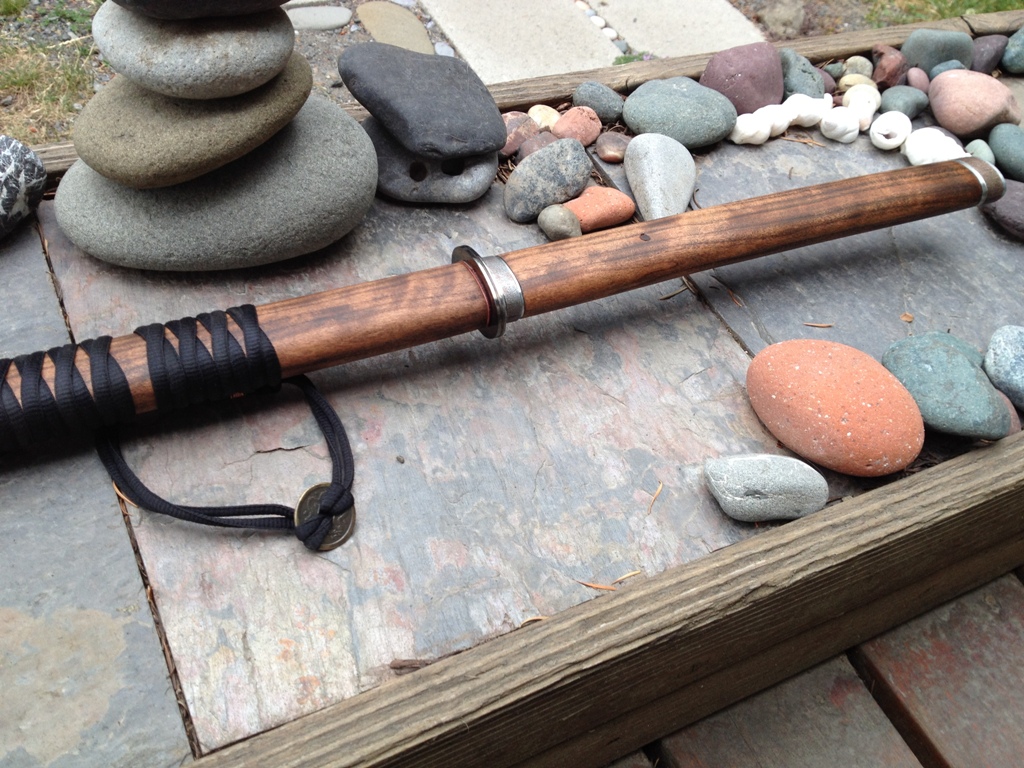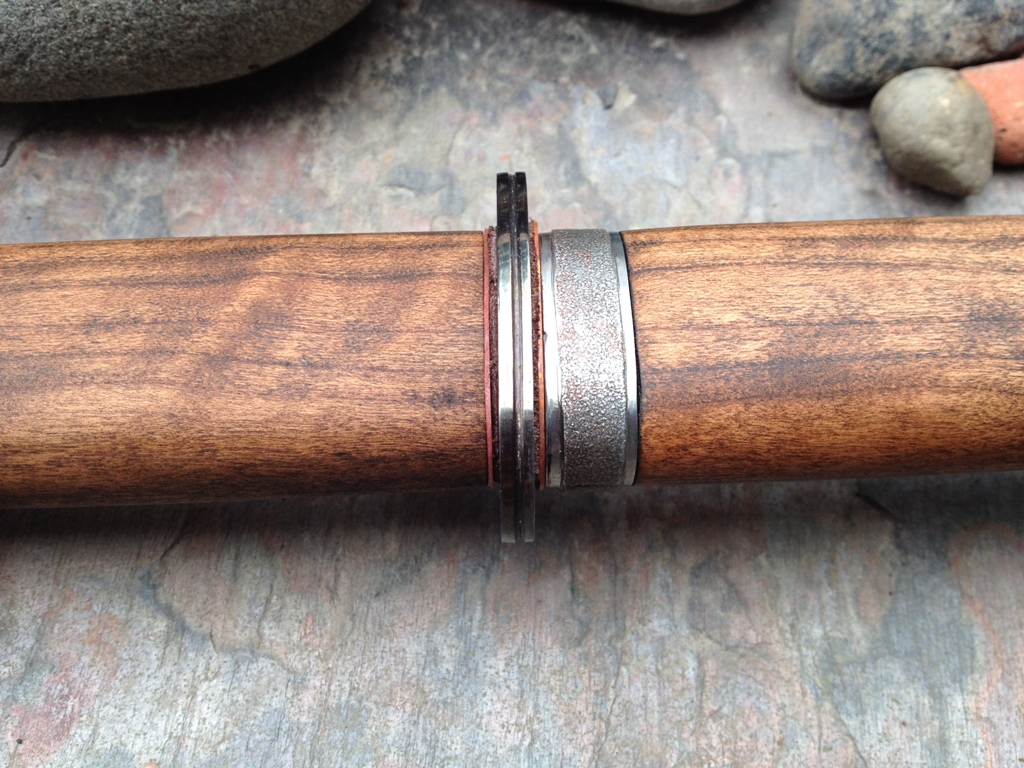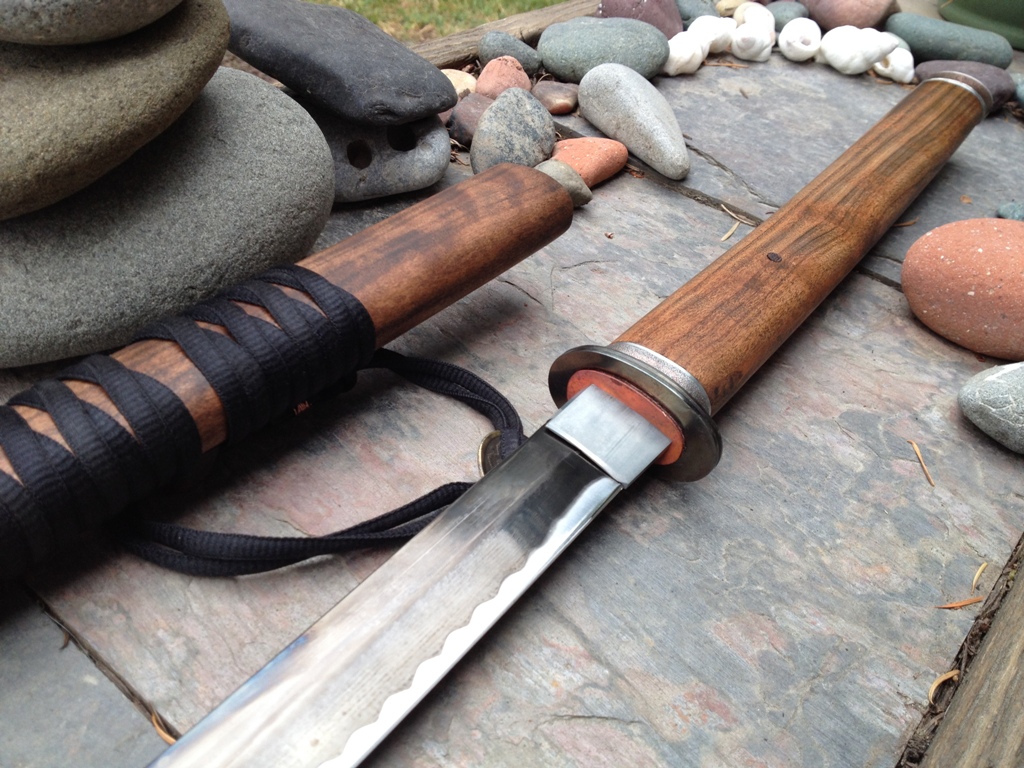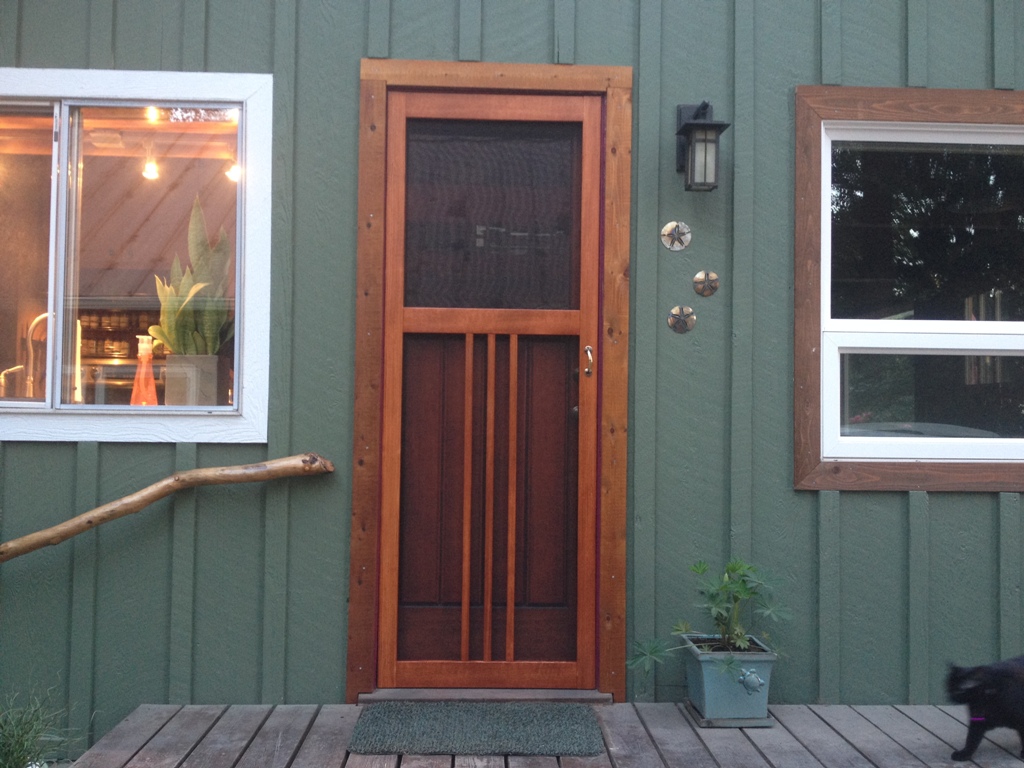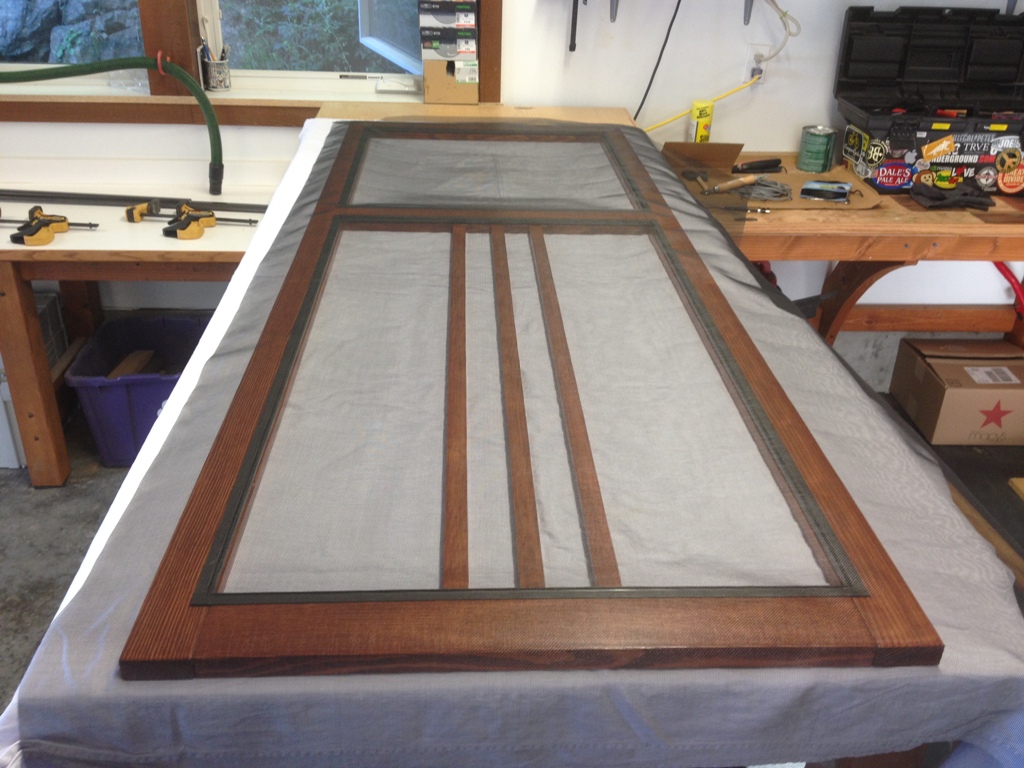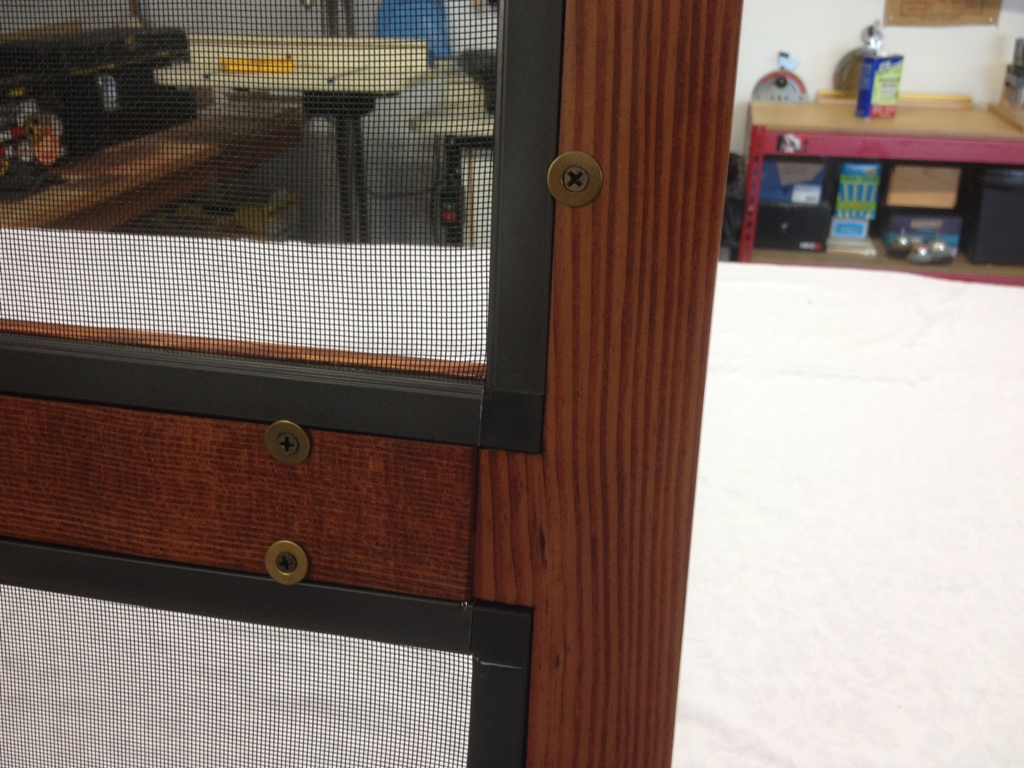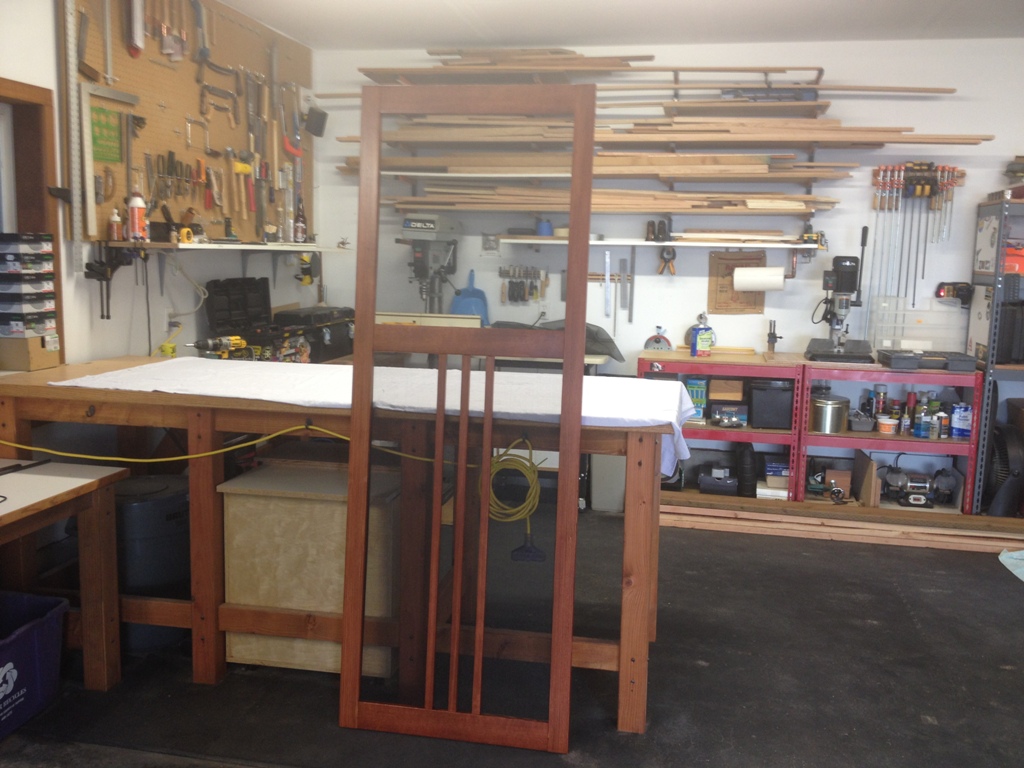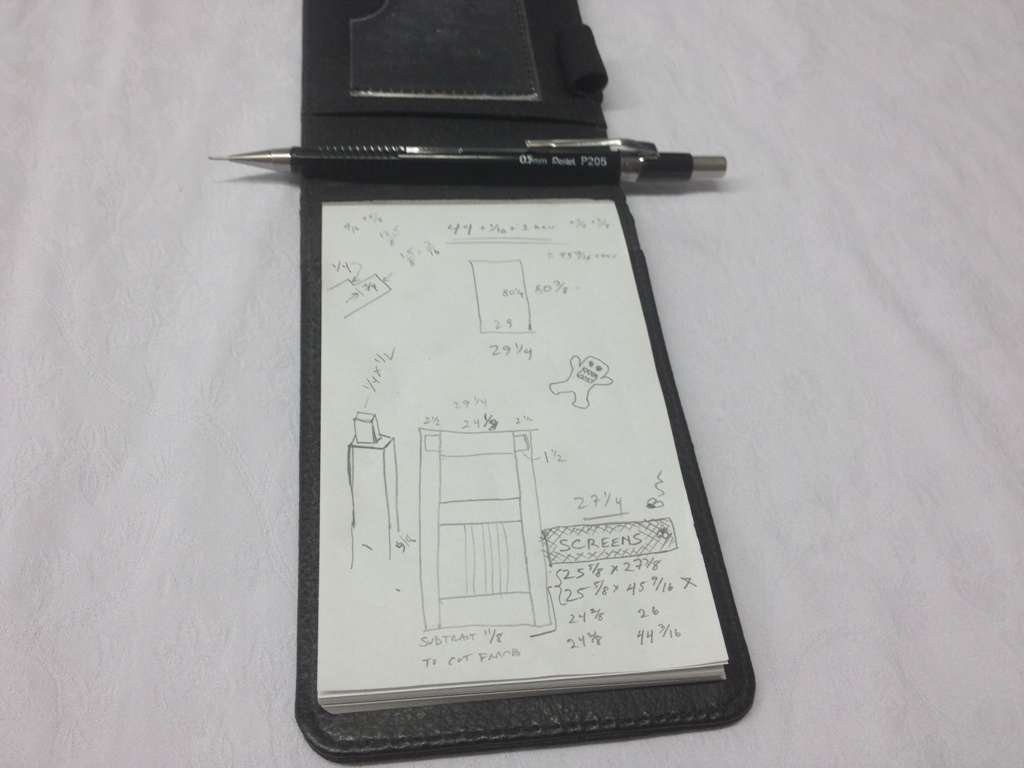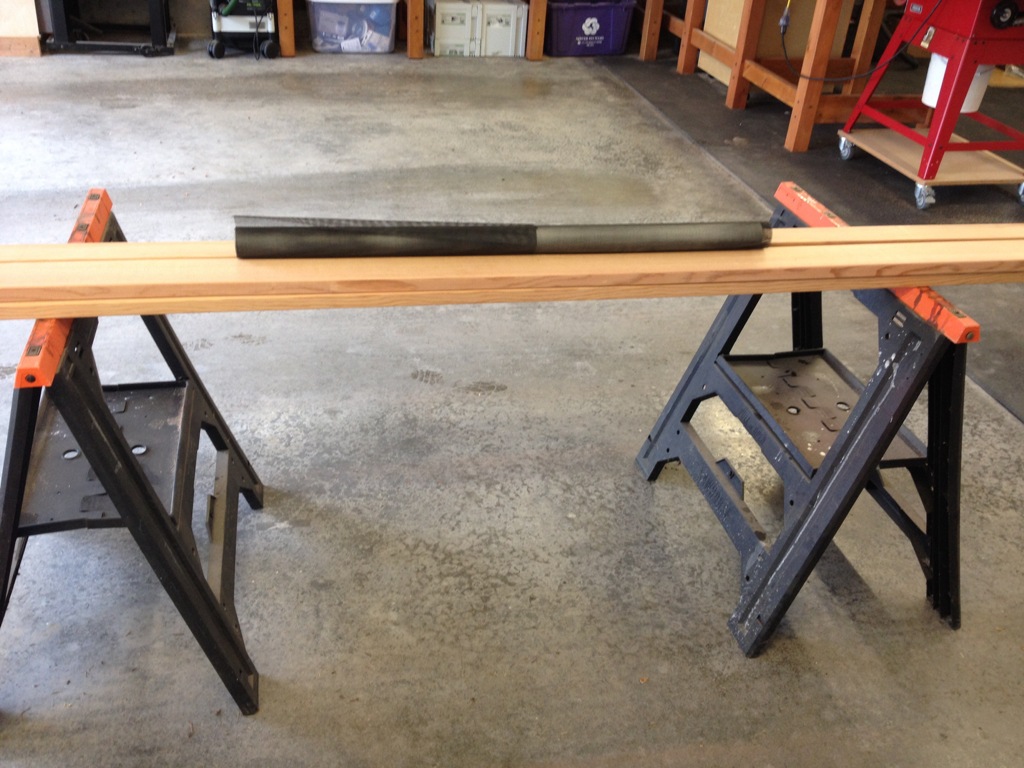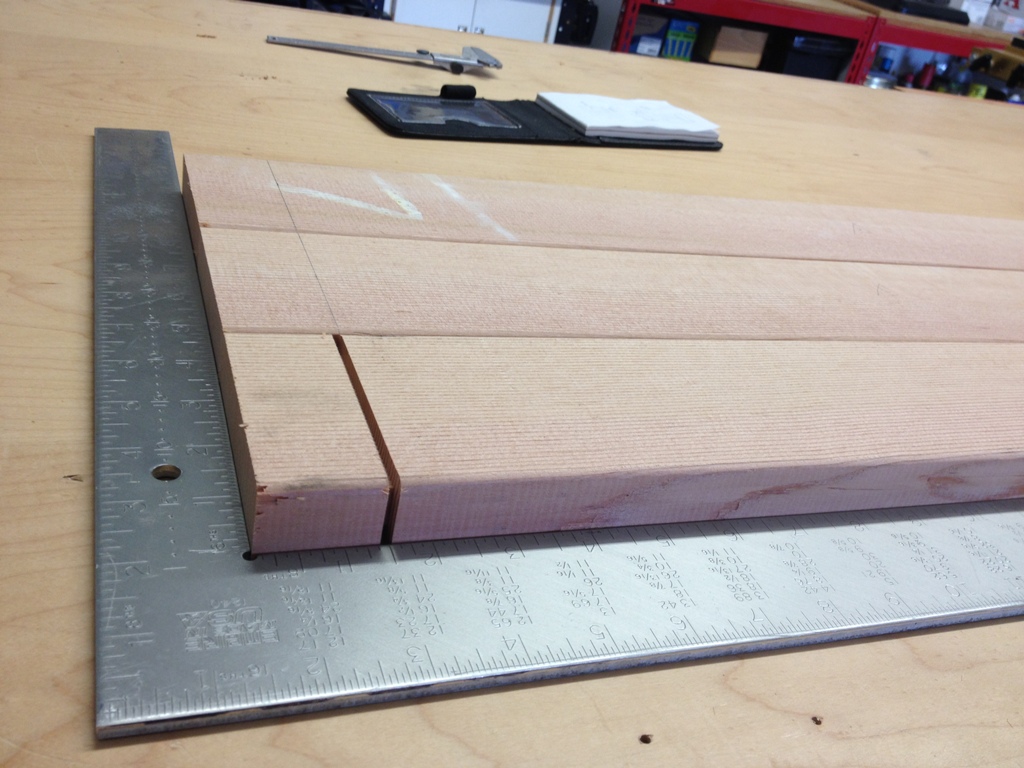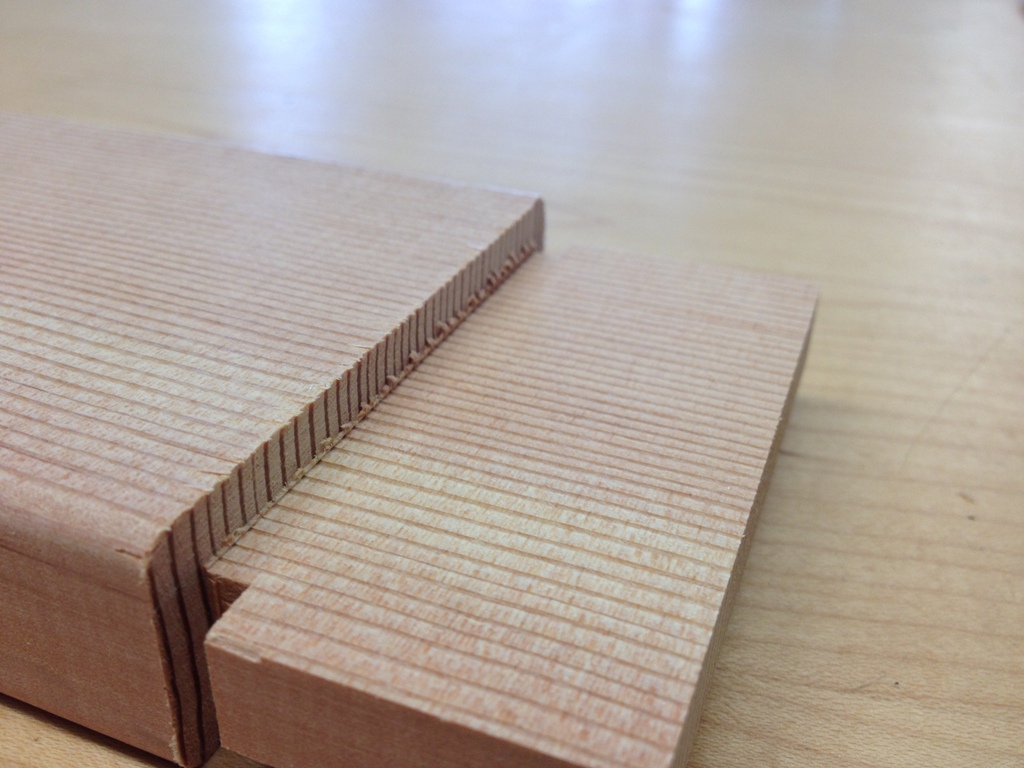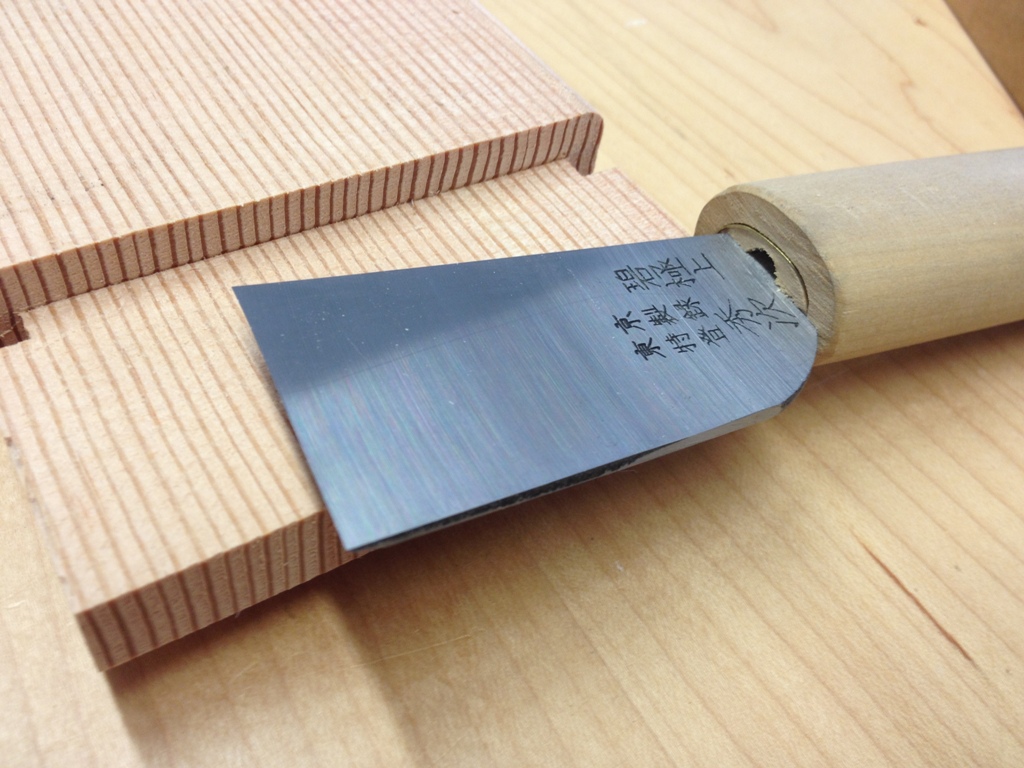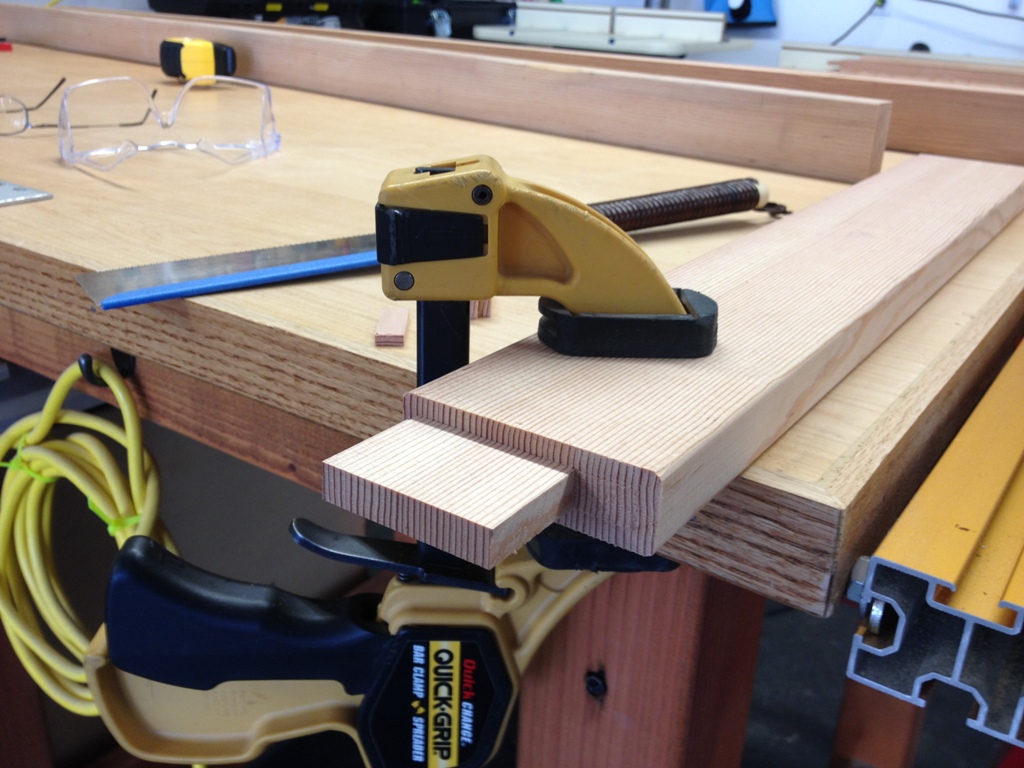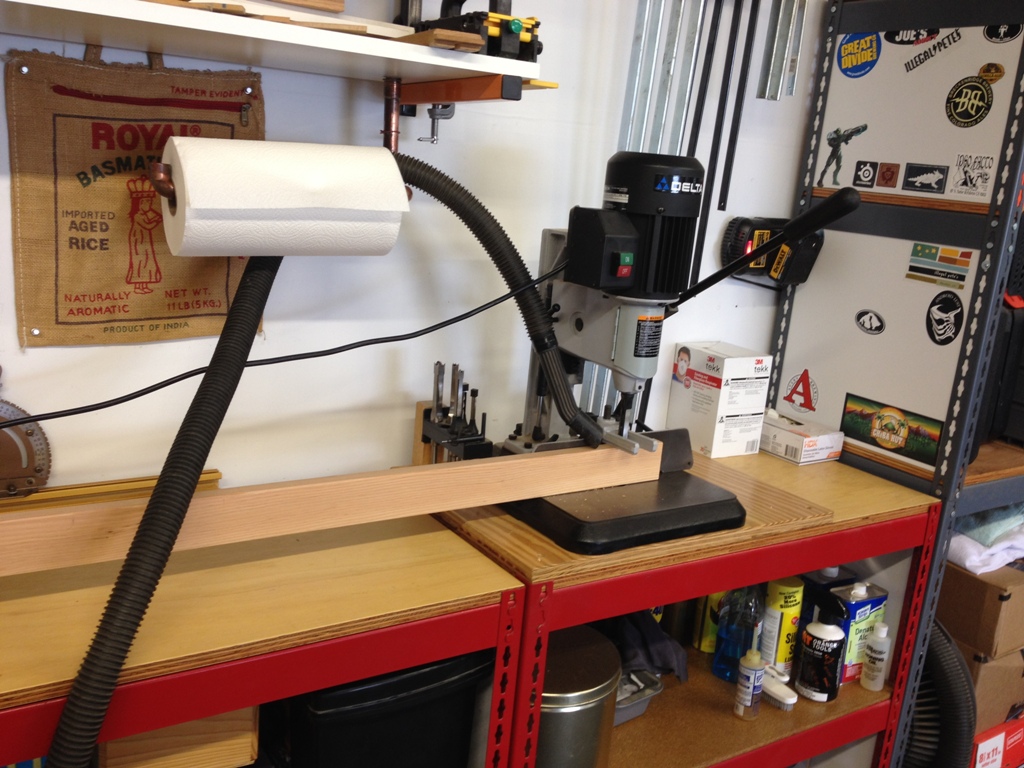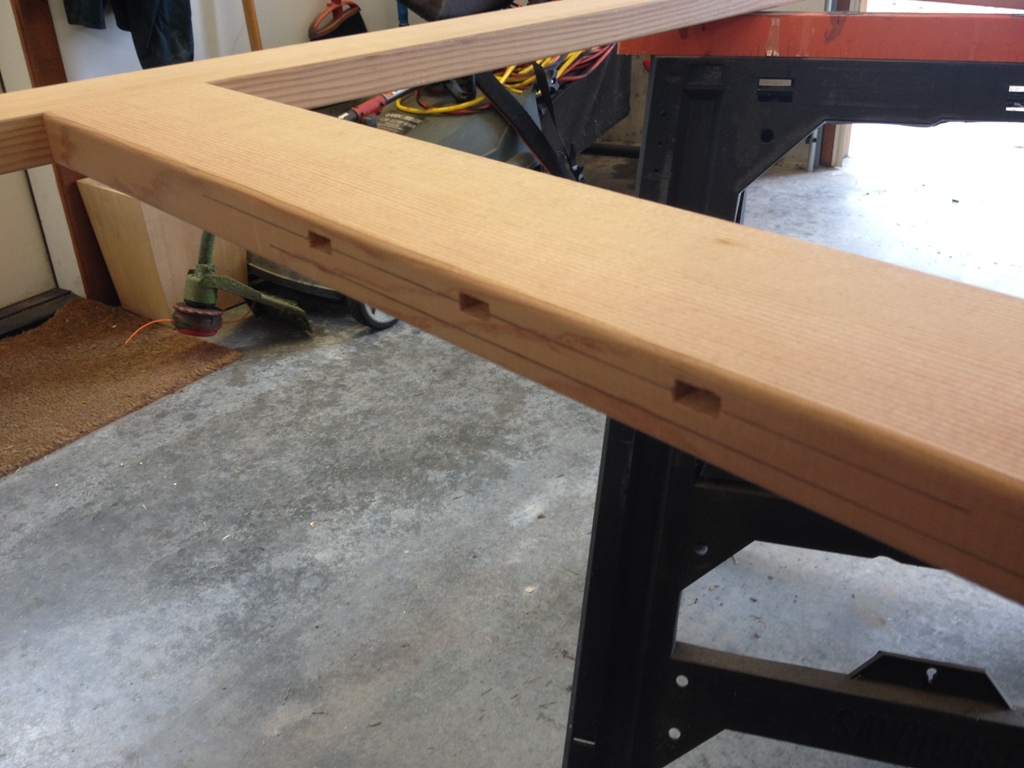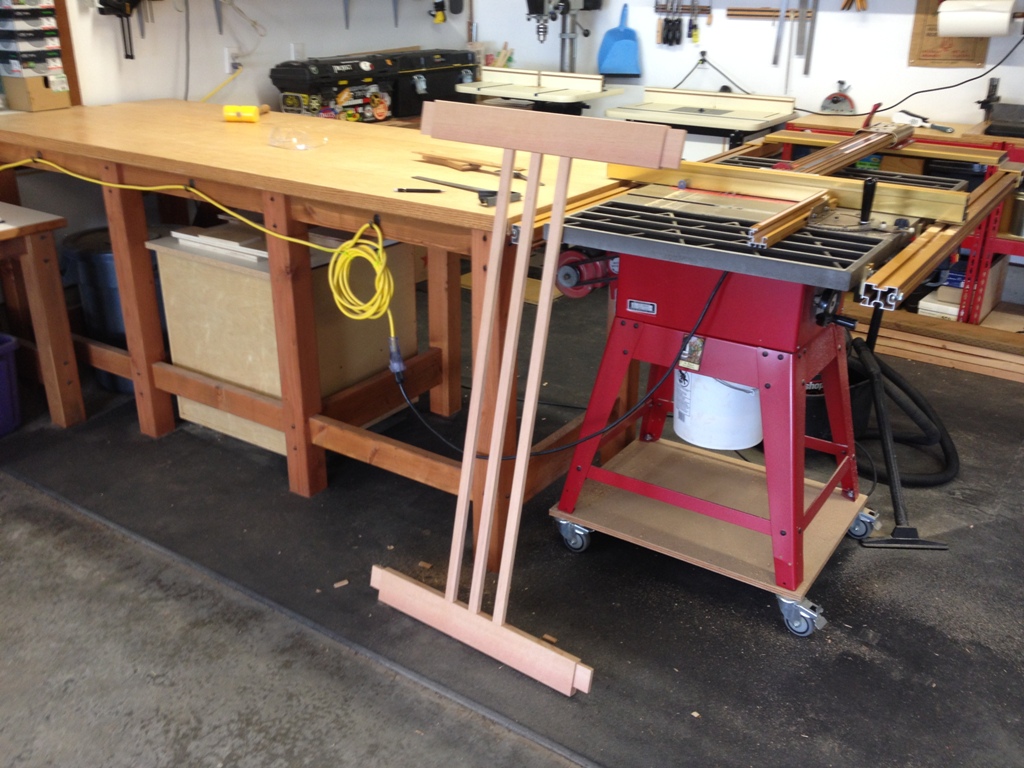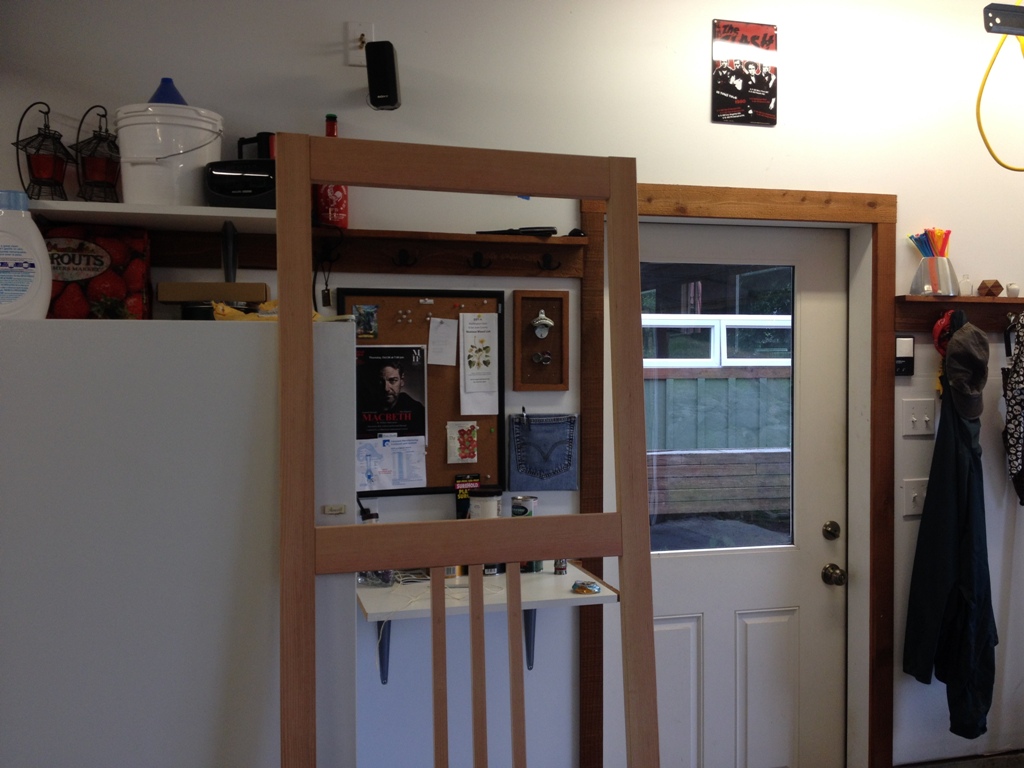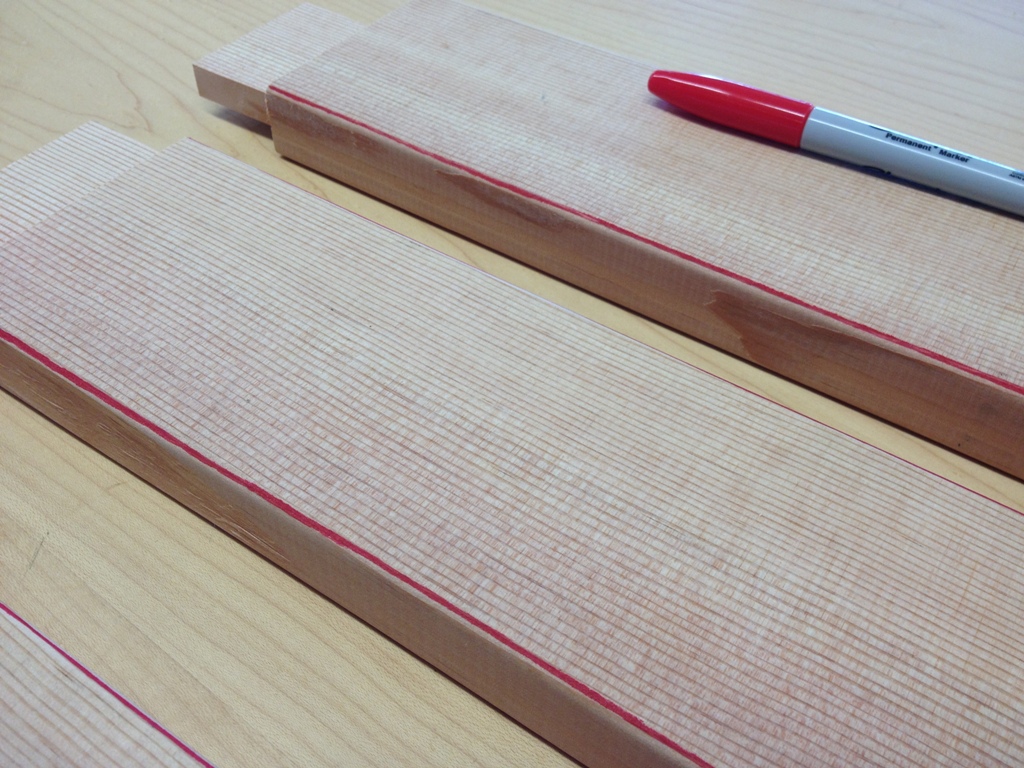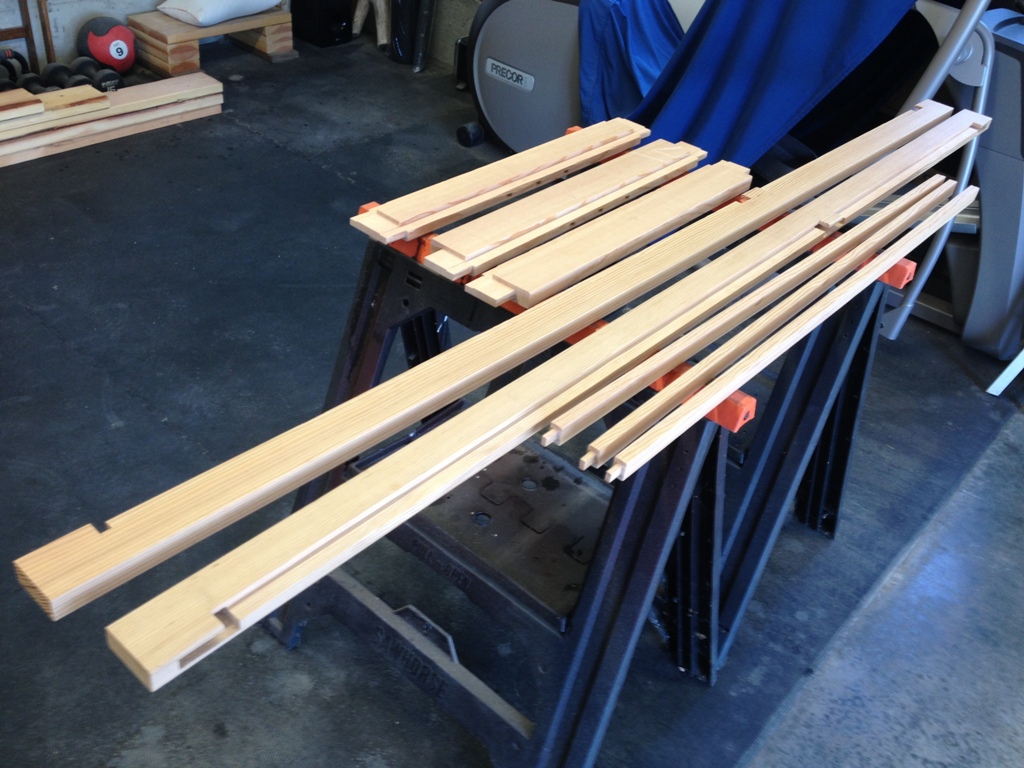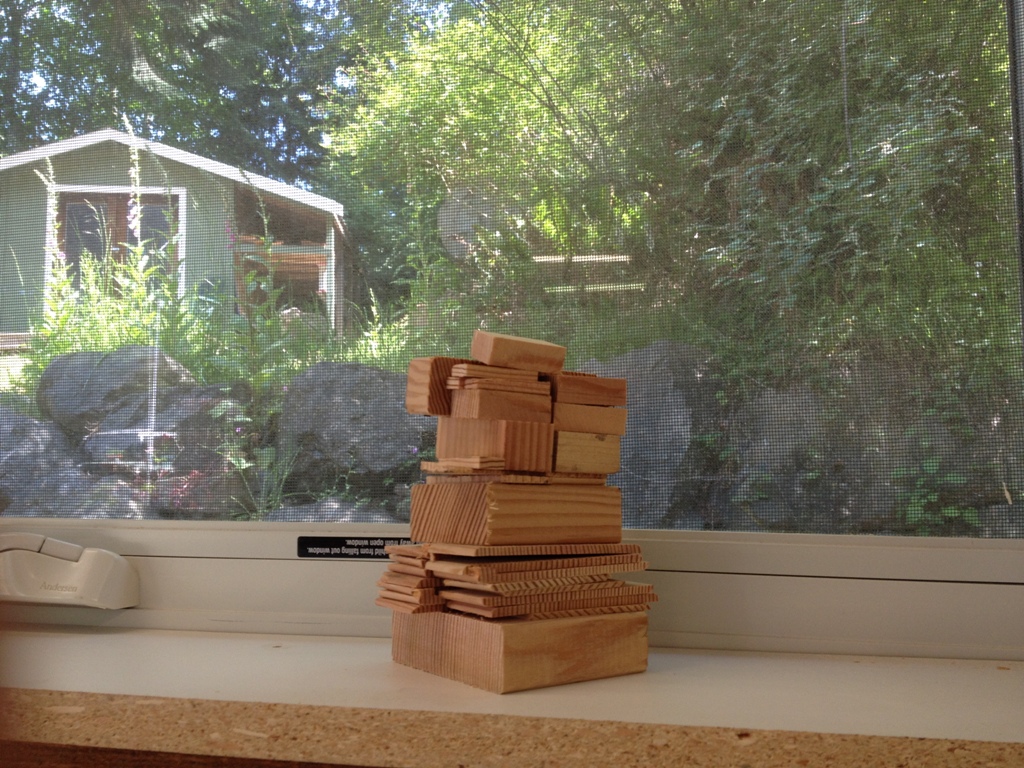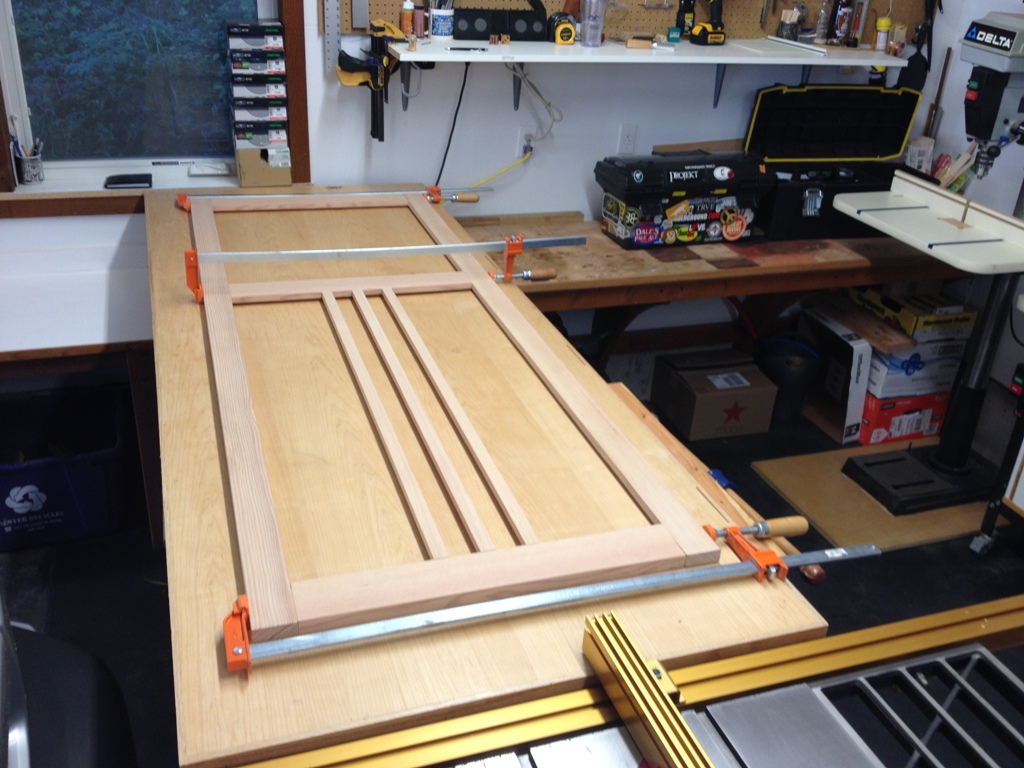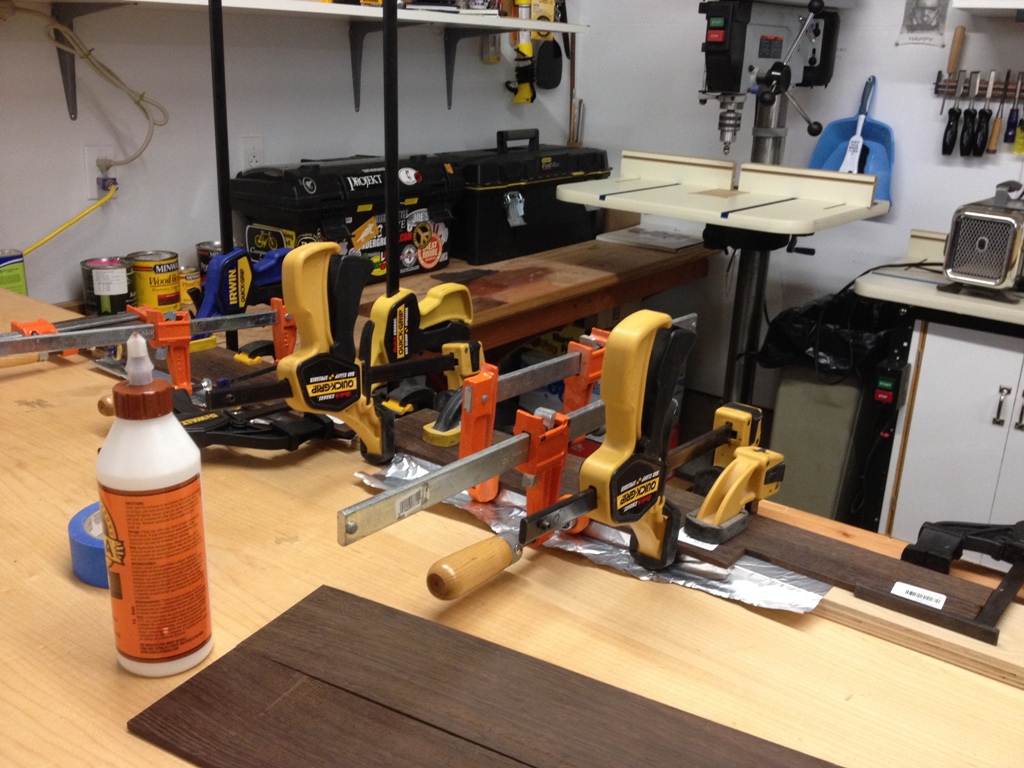There are few things on this dirty, gray planet Earth that I love more than a finished project. The pocket doors are now done and installed and they will remain there until the End of Days.
They shut.
And they open too. Yay. All done. Okay, so I still have to do some little things like polyurethane and setting stops and making some adjustments so they close squarely and levelly, but hey, for all practical purposes they’re done and I can move on to the next thing.
The other pair of doors, depicted above, is on the opposite side of the room and can only be accessed by crawling under the desk. It may seem like a pain in the ass, and it is, and so was the install for that matter, but these eave storage areas are a pain in the ass no matter where the desk is. It’s just a good thing my desk is huge enough that you could park a volkswagen under it.
This project was pretty fun but it still takes a lot of time, and there were a lot of cuts to make and grooves to rout and holes to drill. Working with imperfect wood has its ups and downs. On the plus side, you get a raw and rustic look, which can fit in well in a little house on a small, remote island. And you can cheat a little, things don’t need to be dead flat and dead square and perfectly level. On the downside, it takes a bit more of an effort just to make sure it’s square enough and flat enough to work.
I was at first going to leave these holes open. They’re just storage area doors, I figured the ventilation would be beneficent. And then I had the horrific thought that someone could get their finger stuck in that hole, and if someone were to slam the door shut the result would be catastrophic (though on the bright side, the detached finger would fill the hole). Anyway, I decided to use wine bottle corks, just for safety reasons.
Cork can fill irregular holes really well because they’ll conform to its shape. All it takes is a mallet and some wood glue and maybe a little swearing. The ends can be sawn flush and sanded and they blend in very well. Not to mention that cork is very resilient and stronger than most people realize.
The panels I stained separately. The grain texture of the plywood panels is very different than the frame, so I deliberately made them a bit darker to give them some contrast. So it’s an ebony stain on the panels, and a different stain on the frame pieces.
It took hours to sand all those. I felt like I had sanded a tree.

